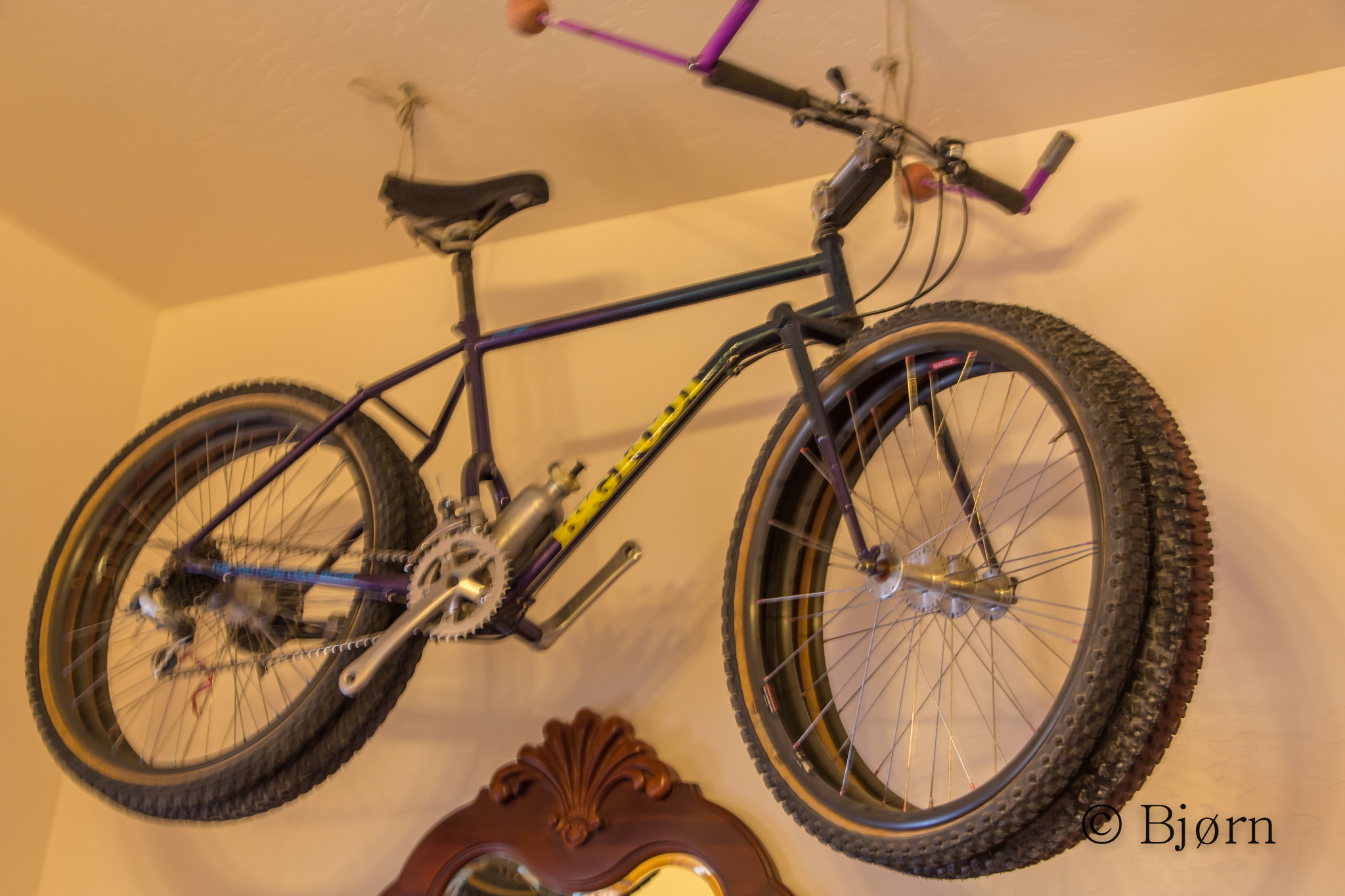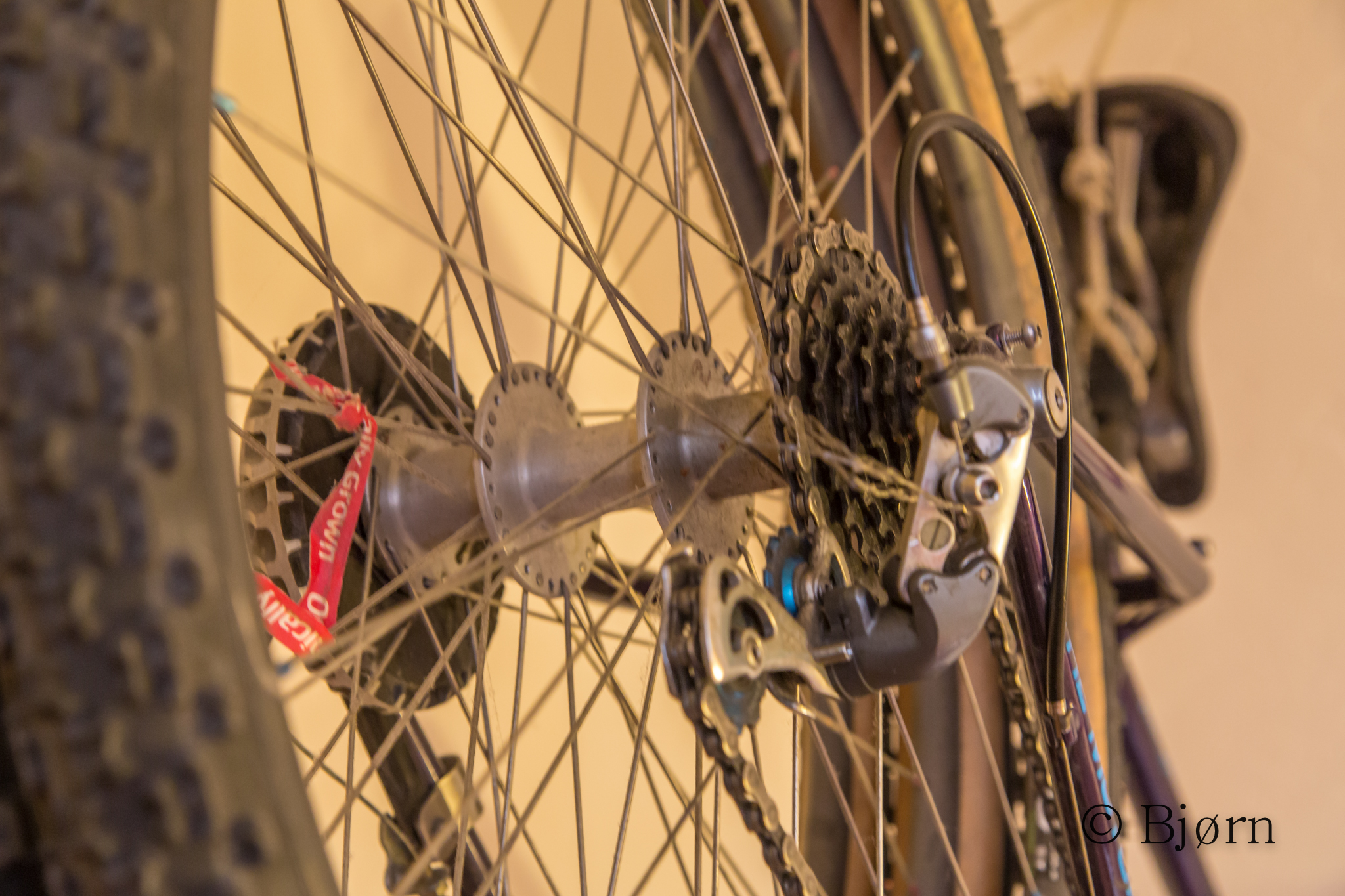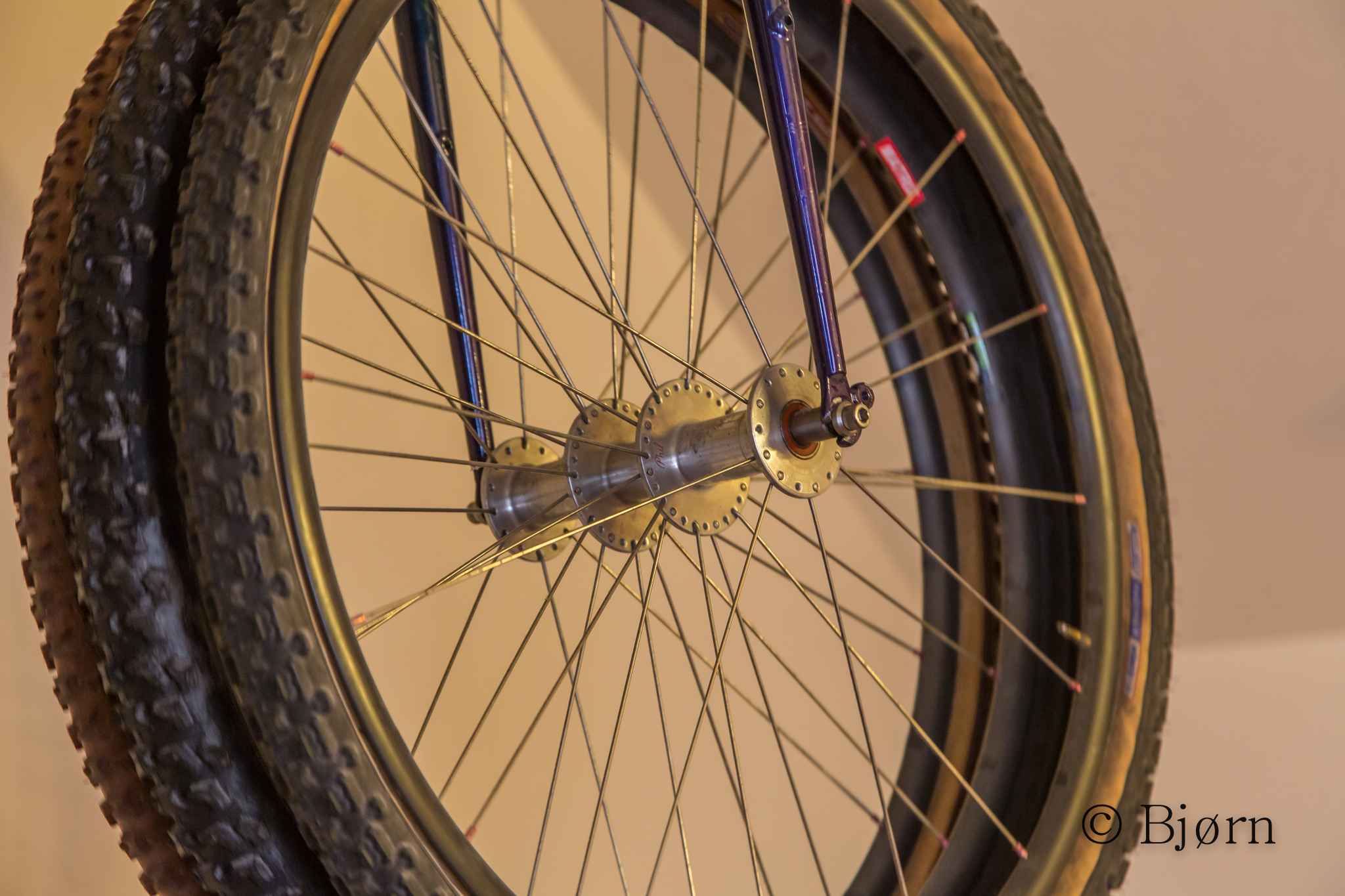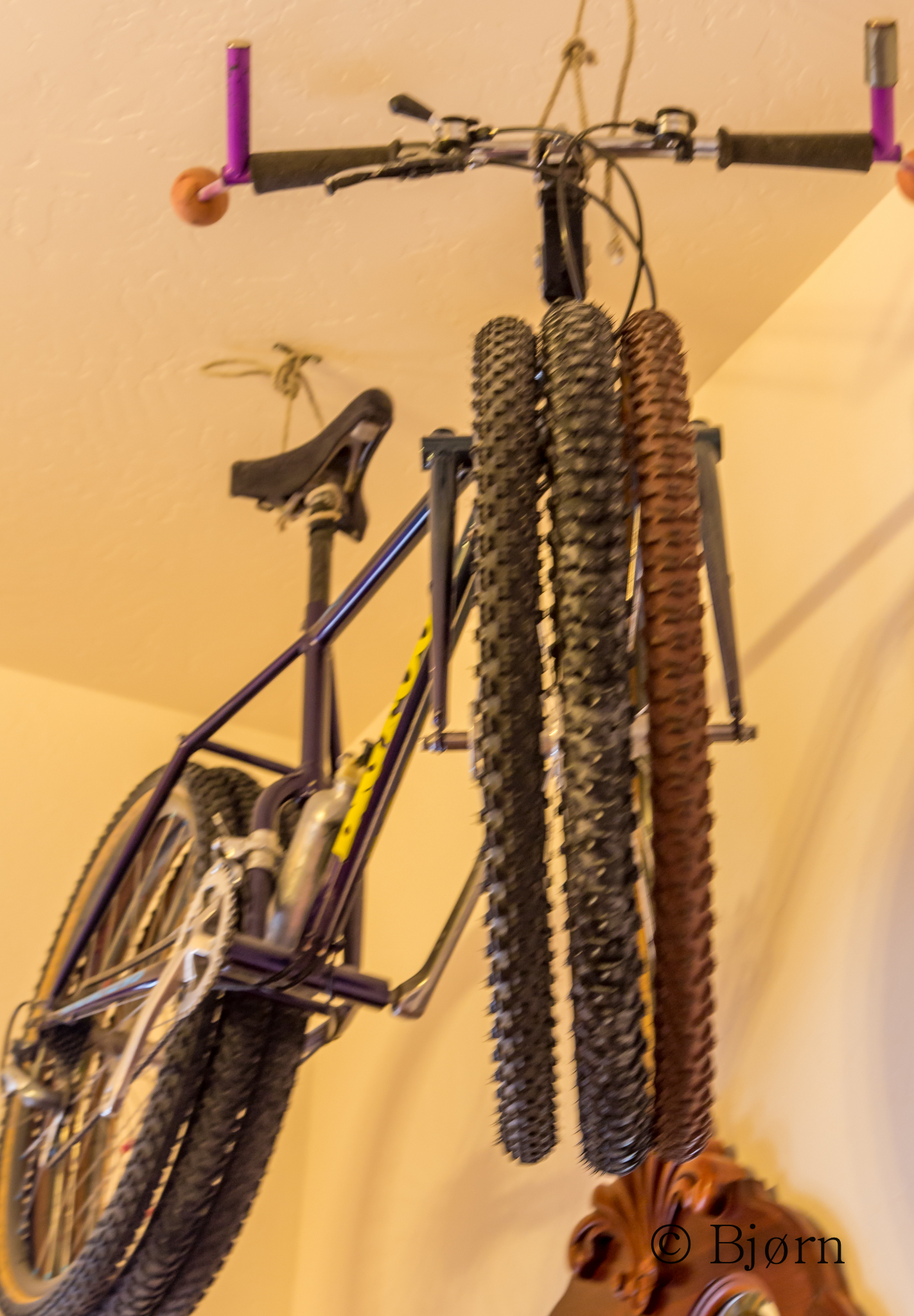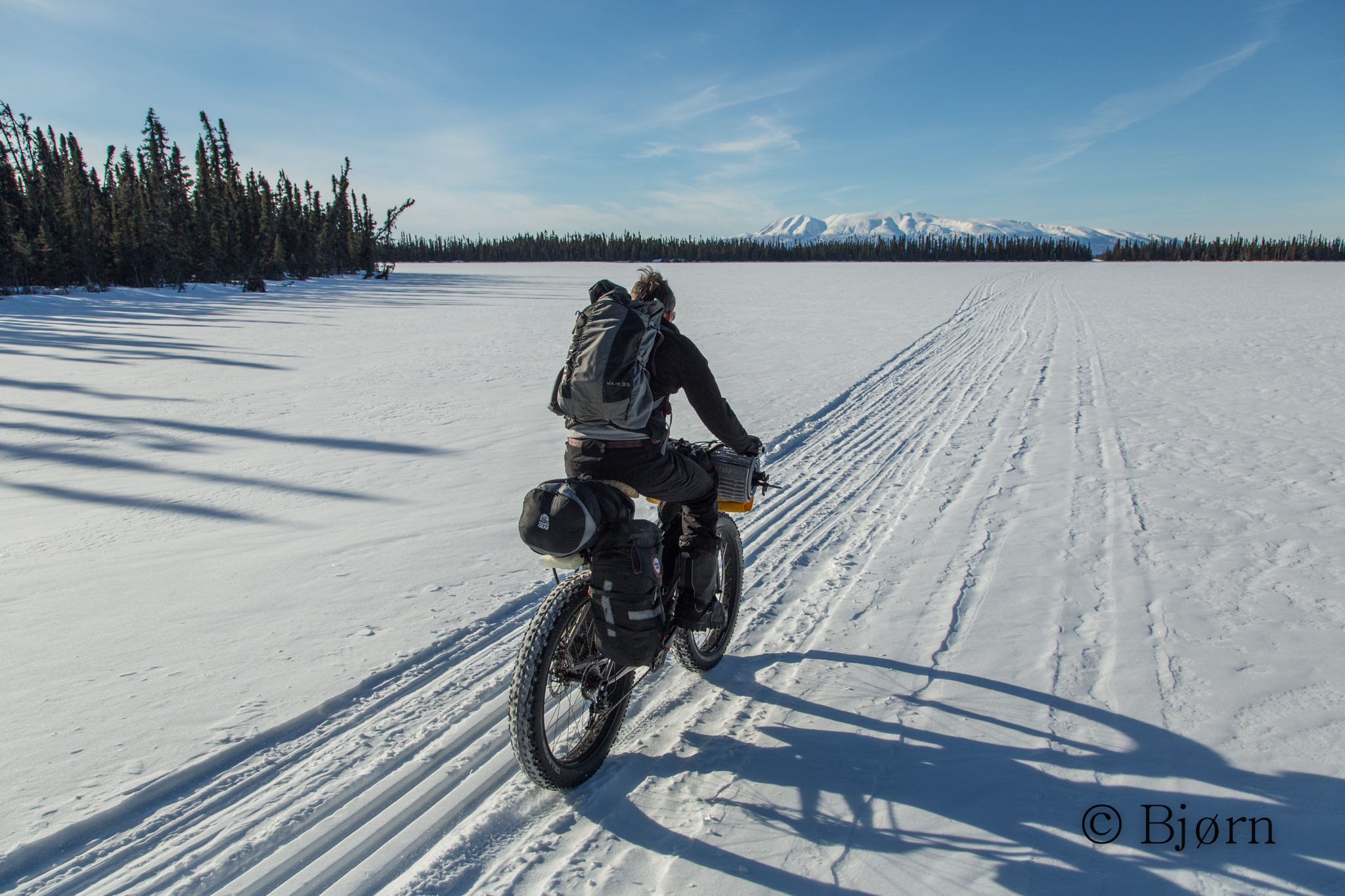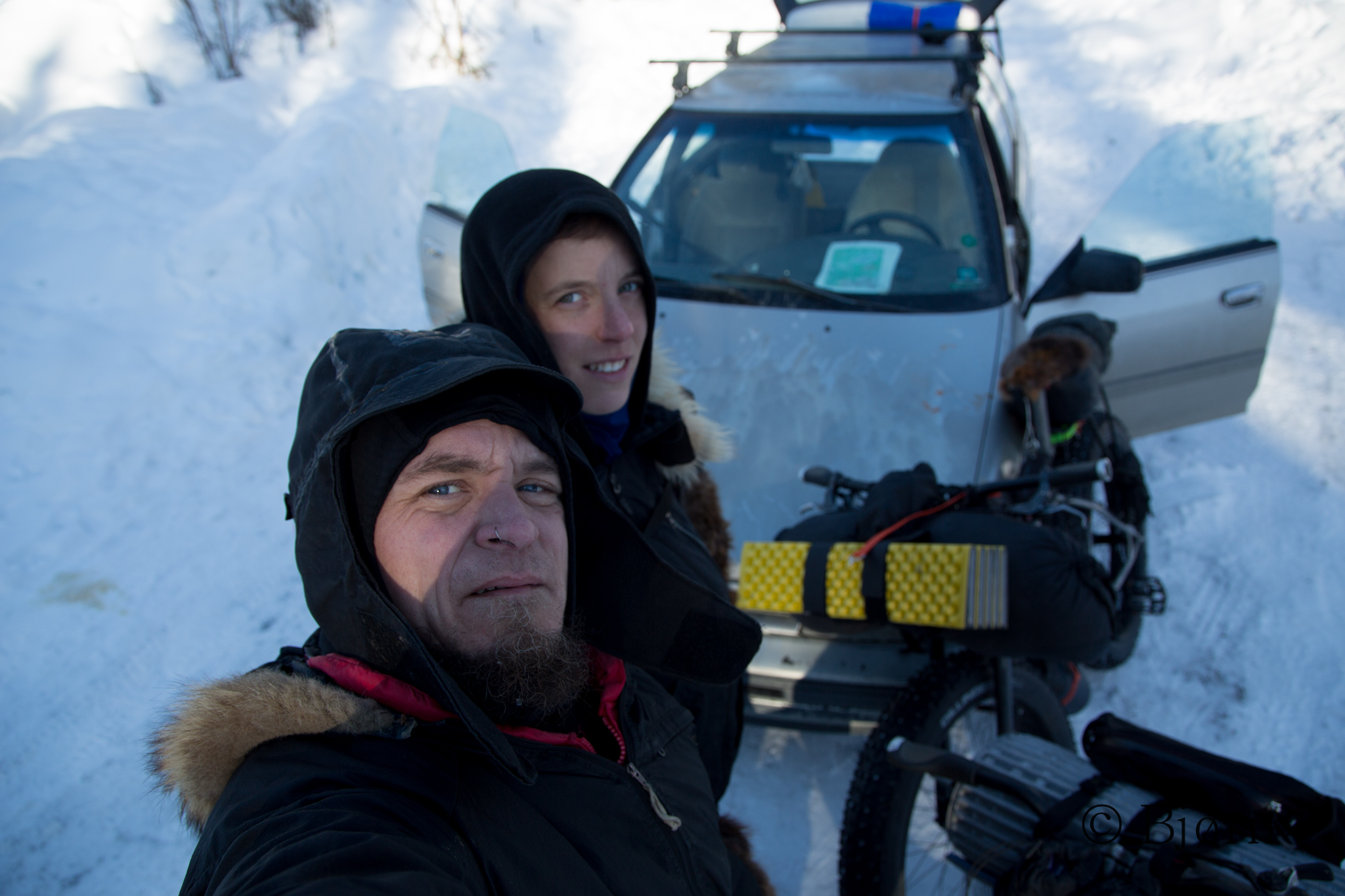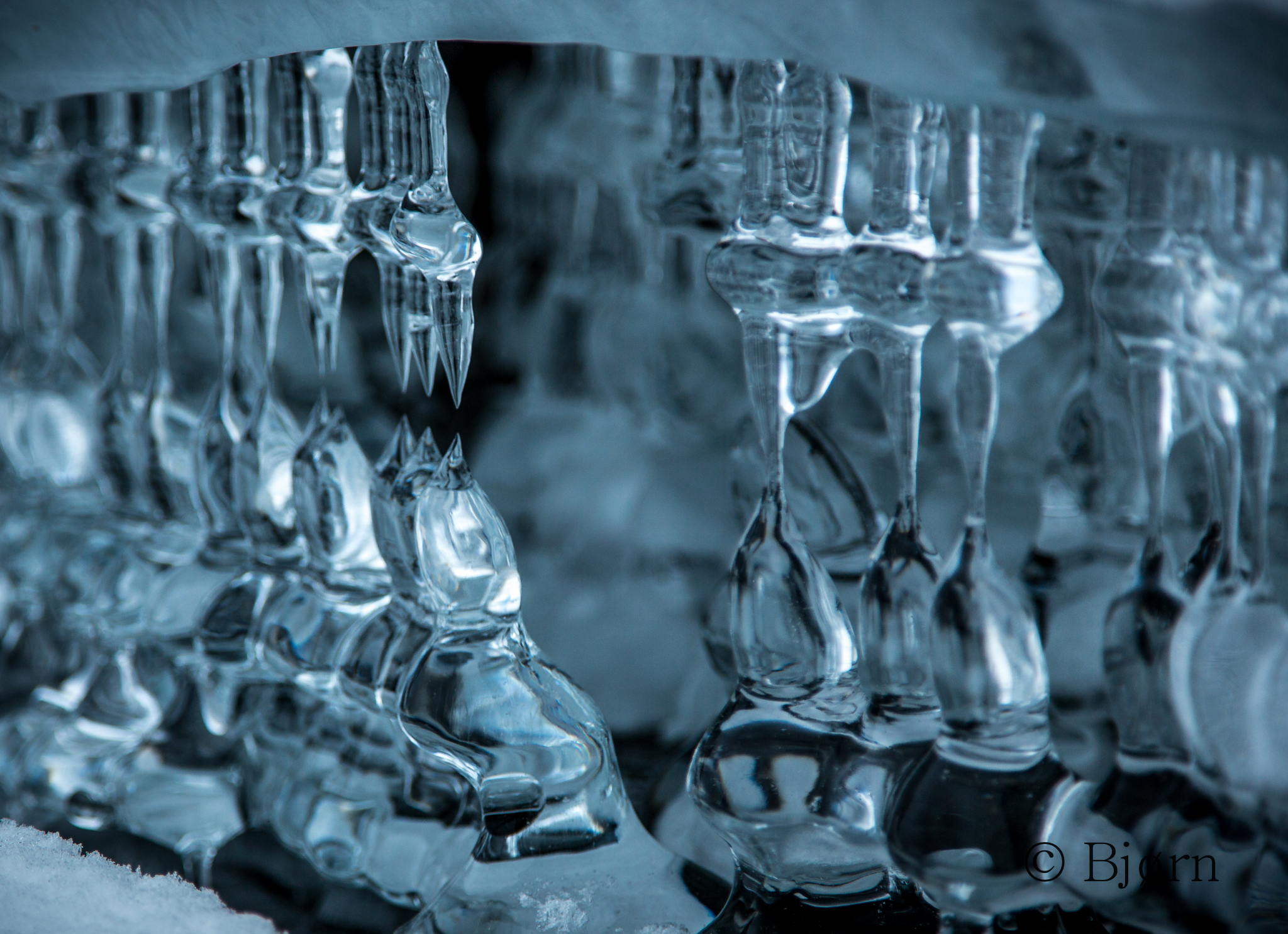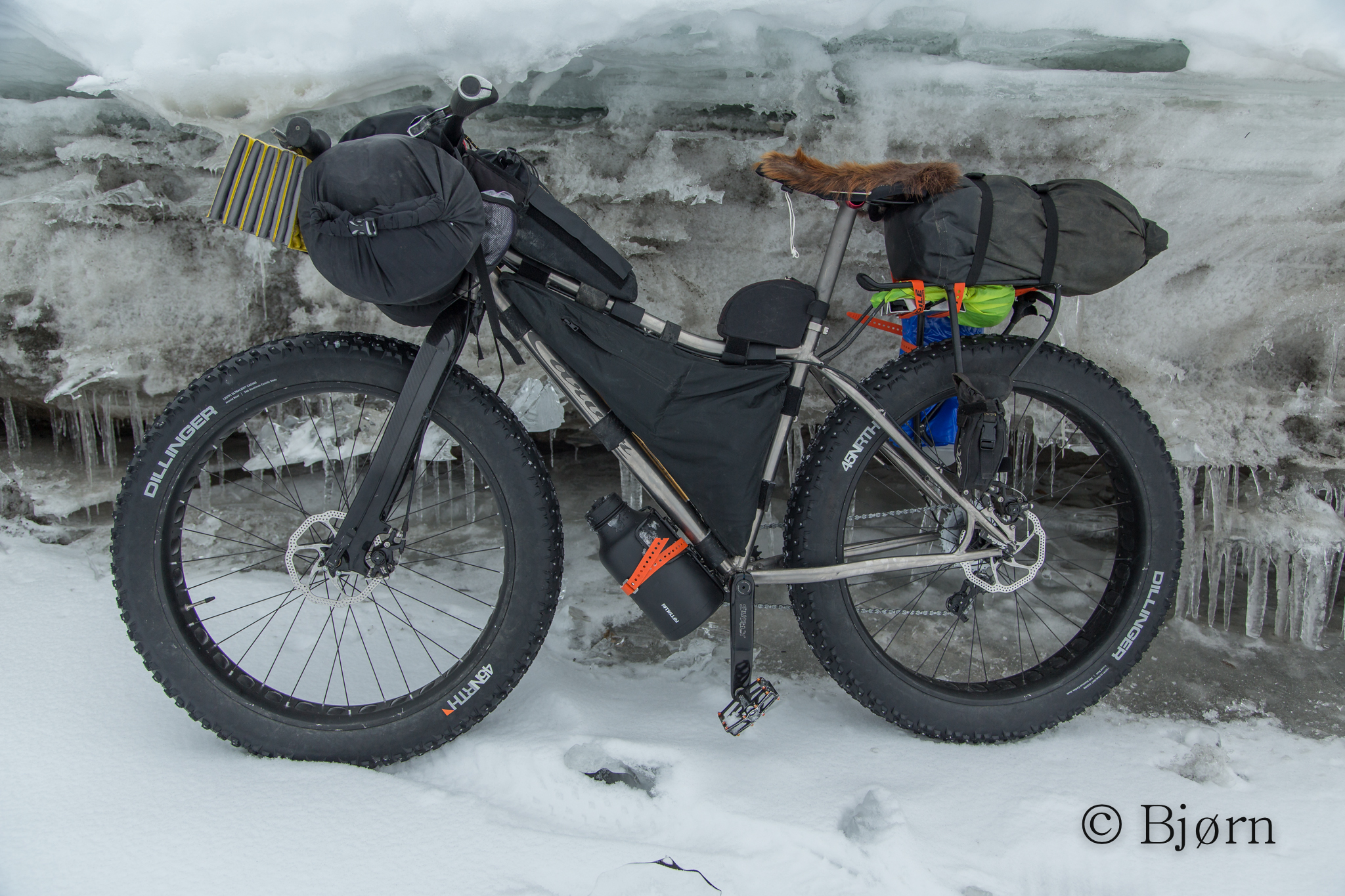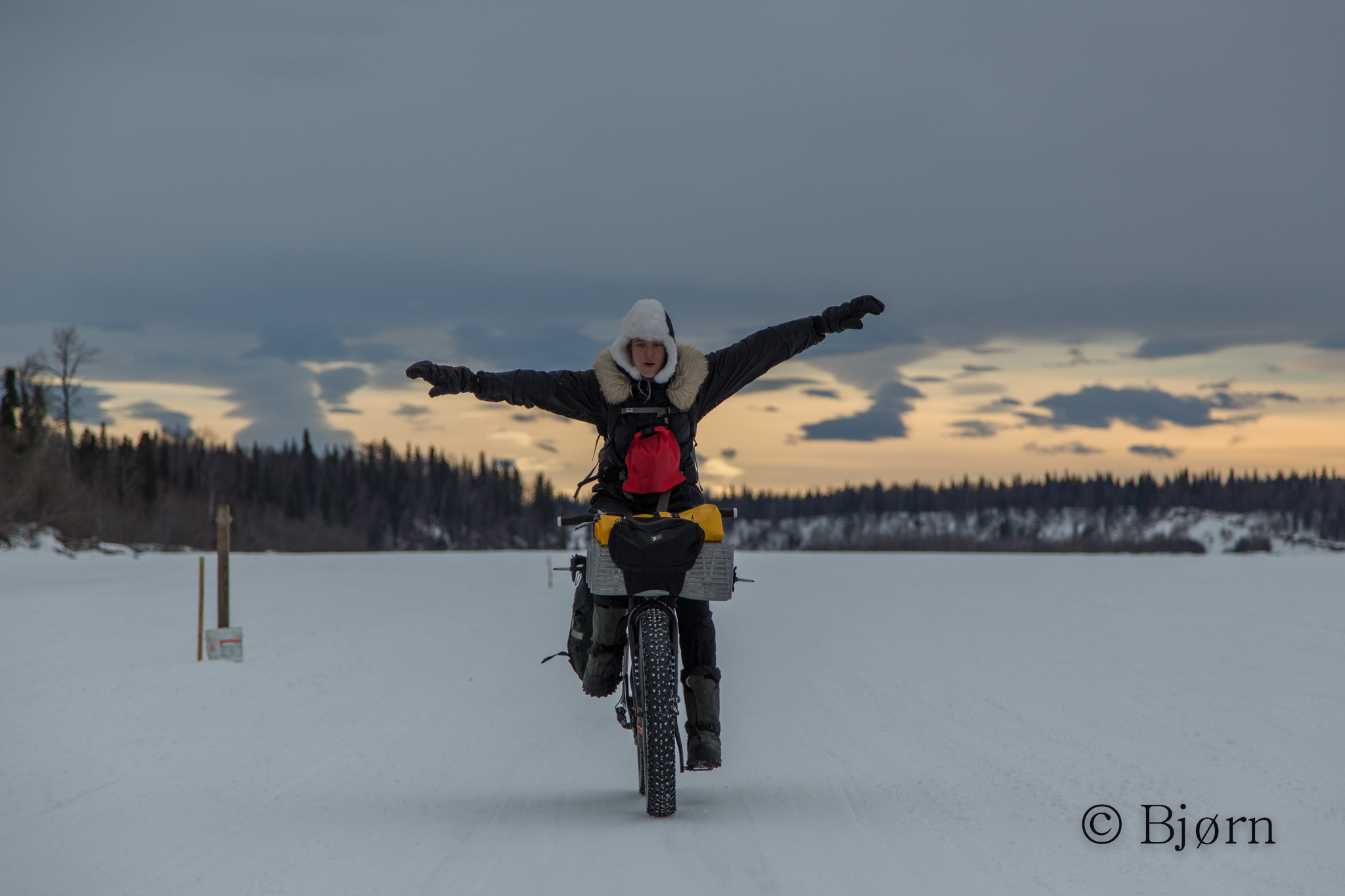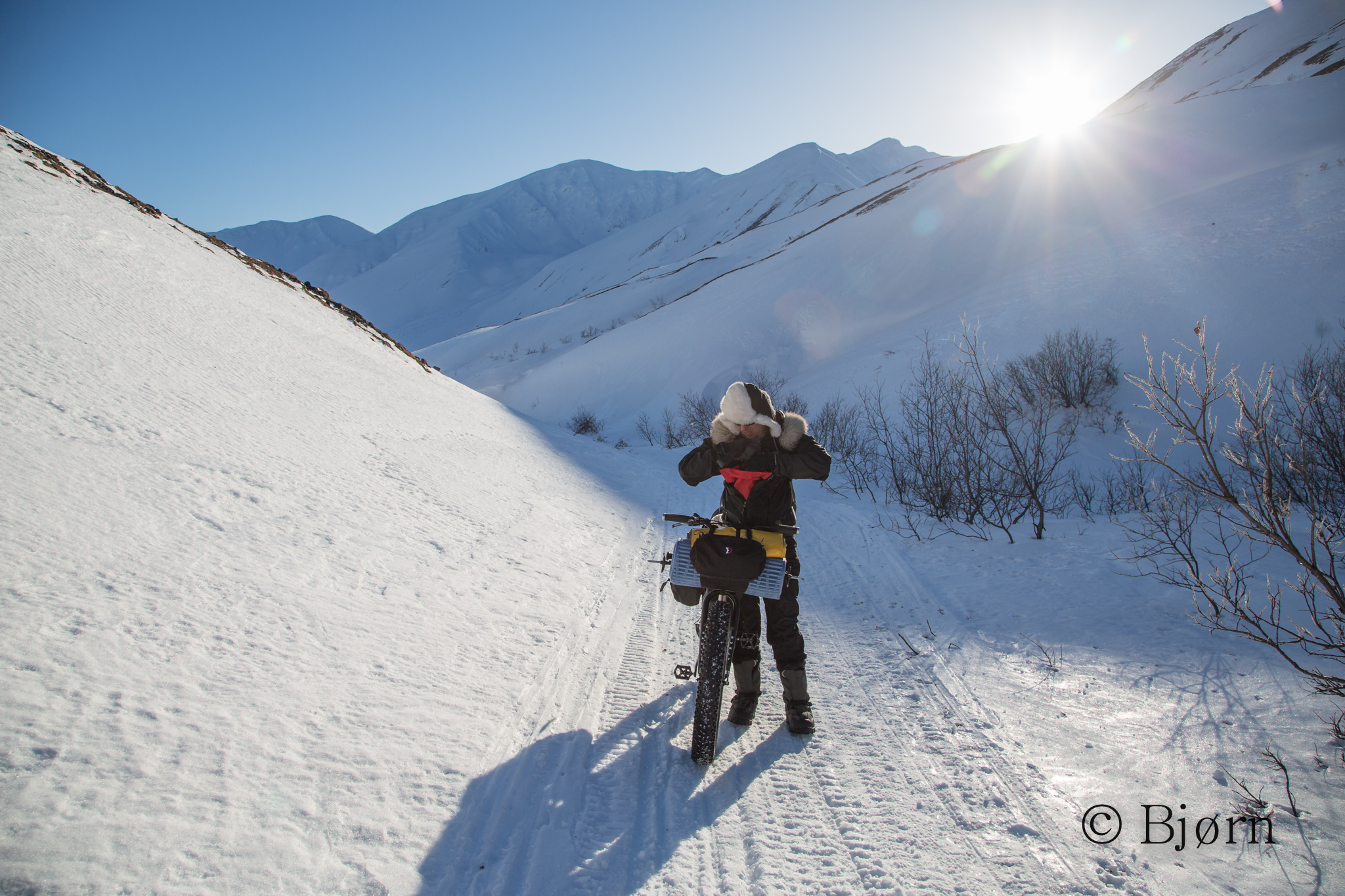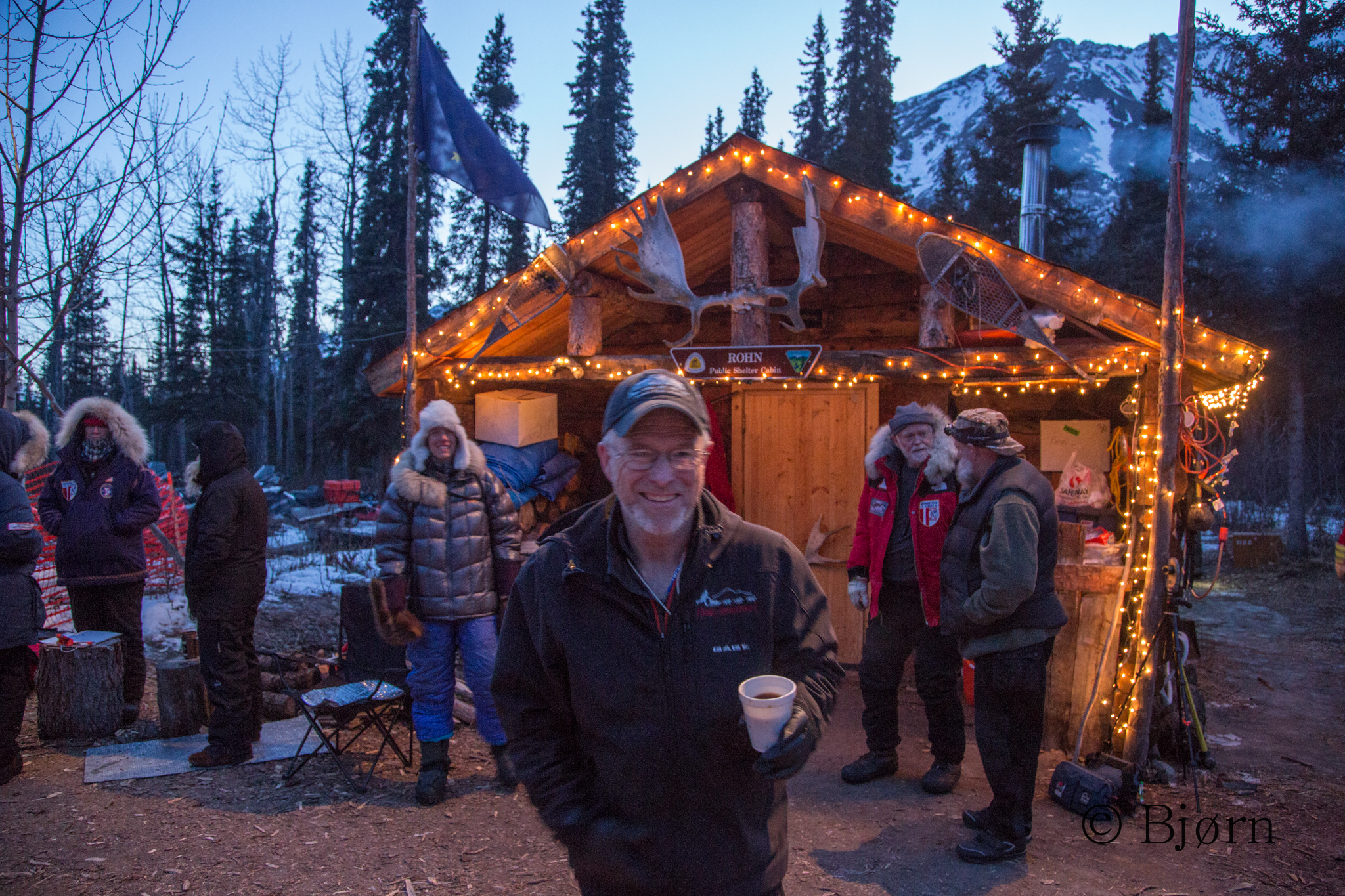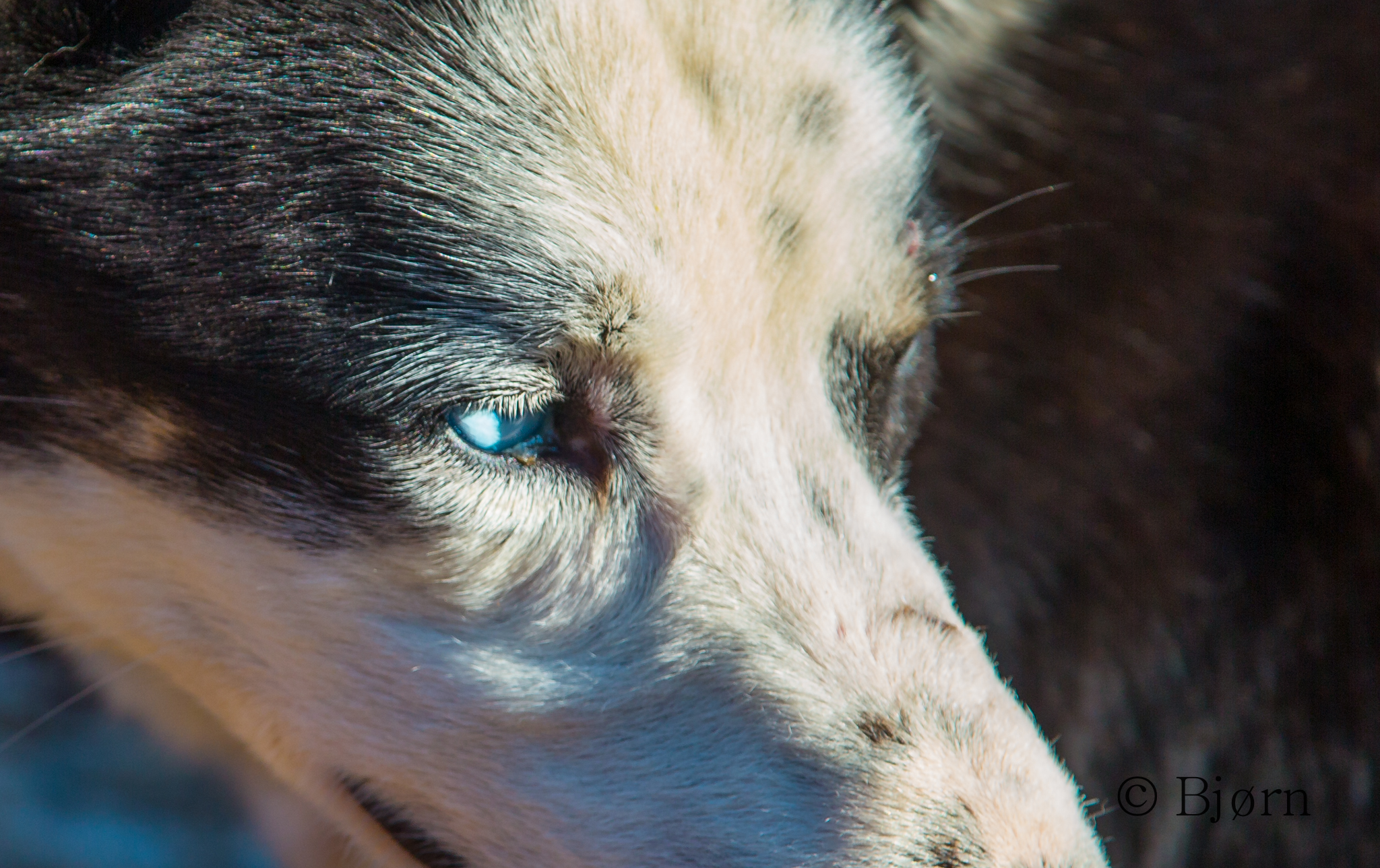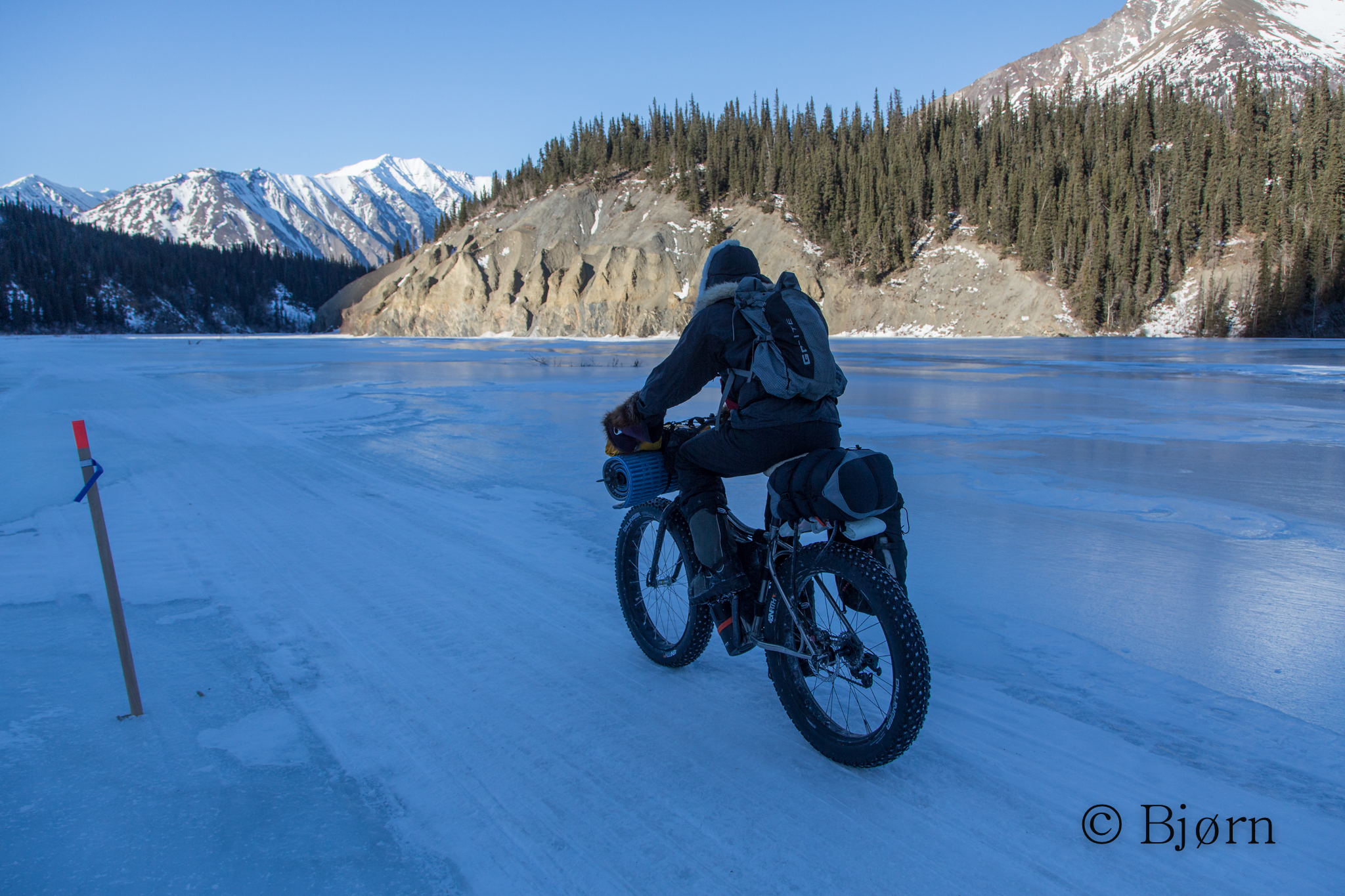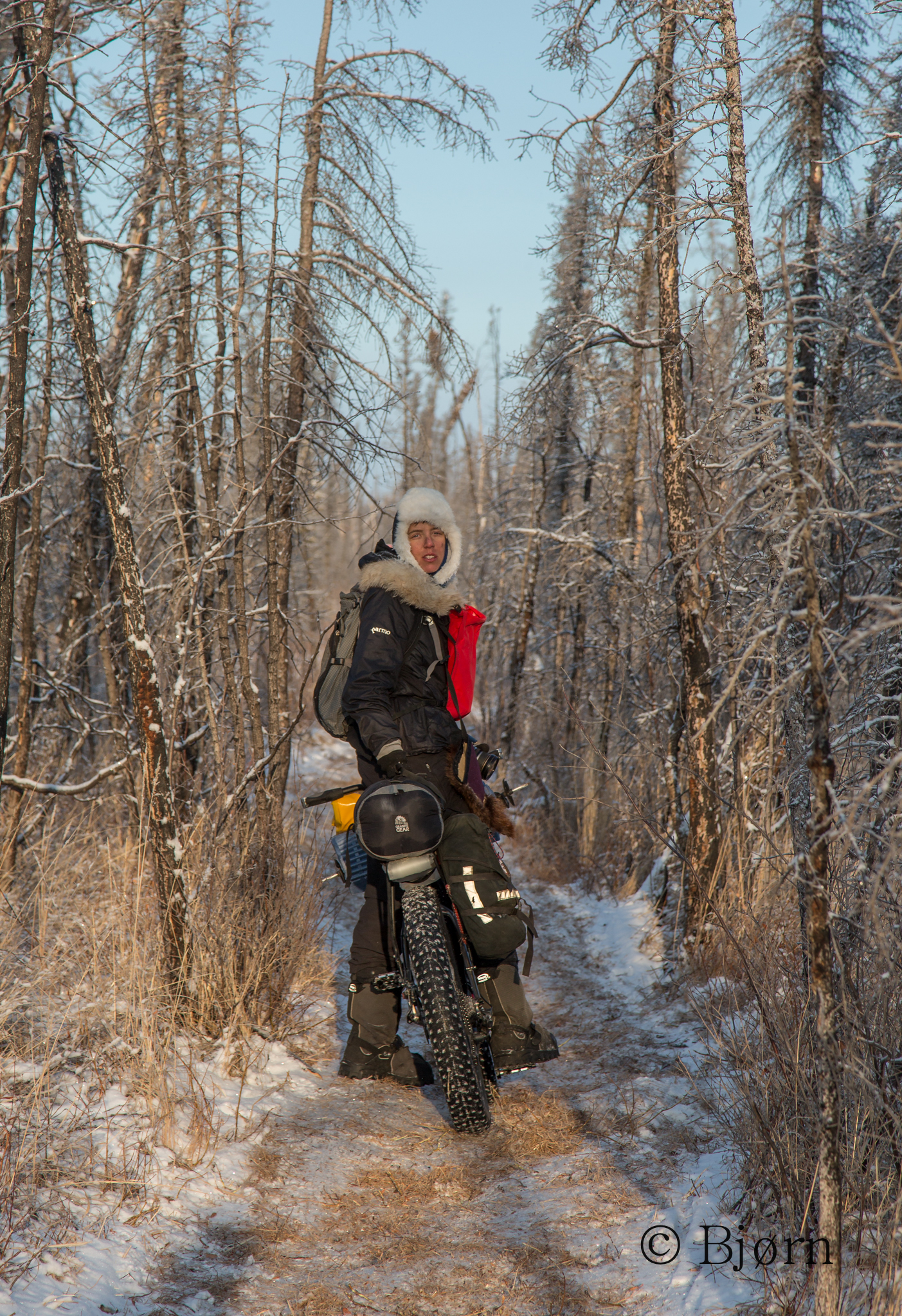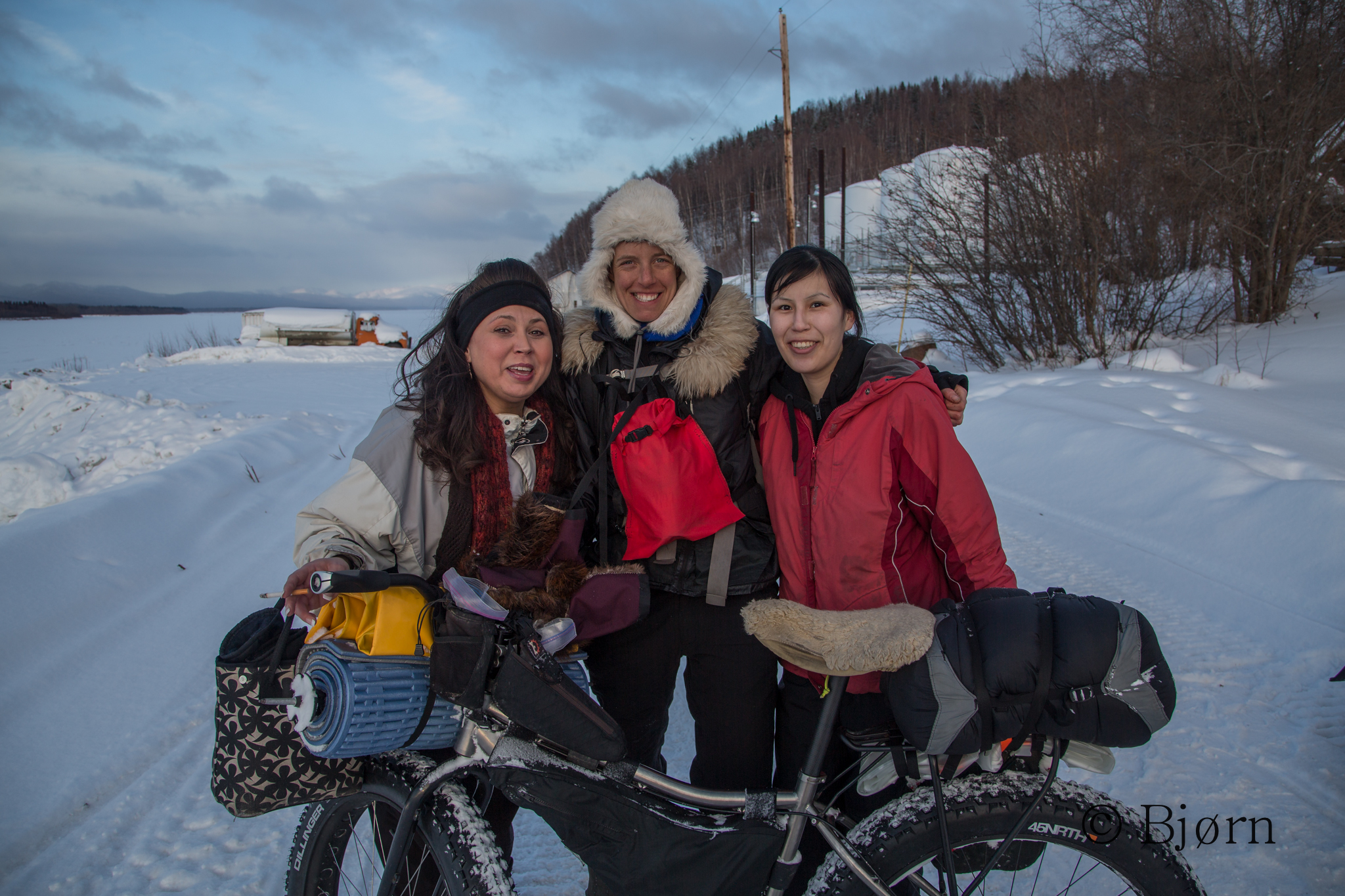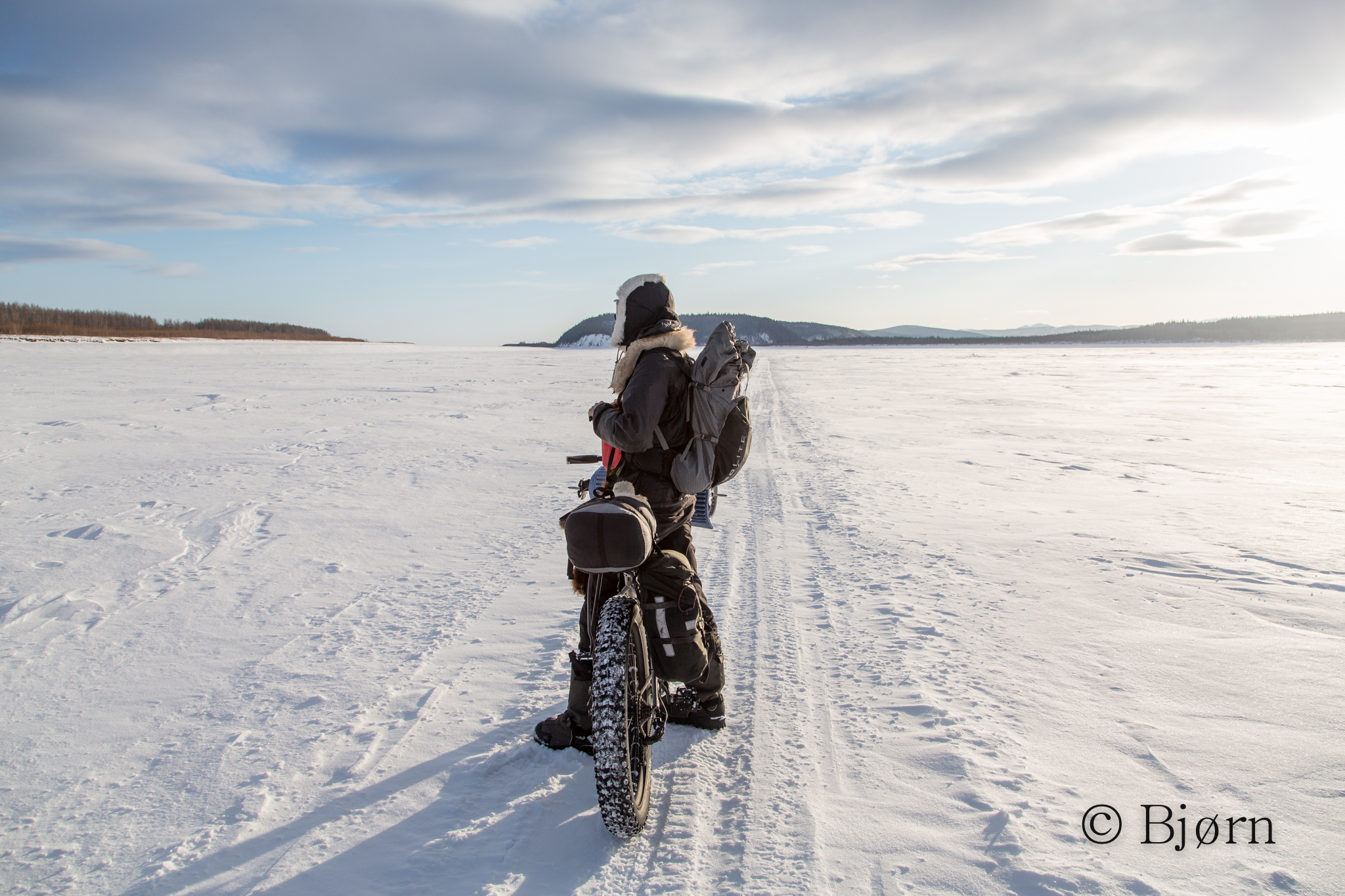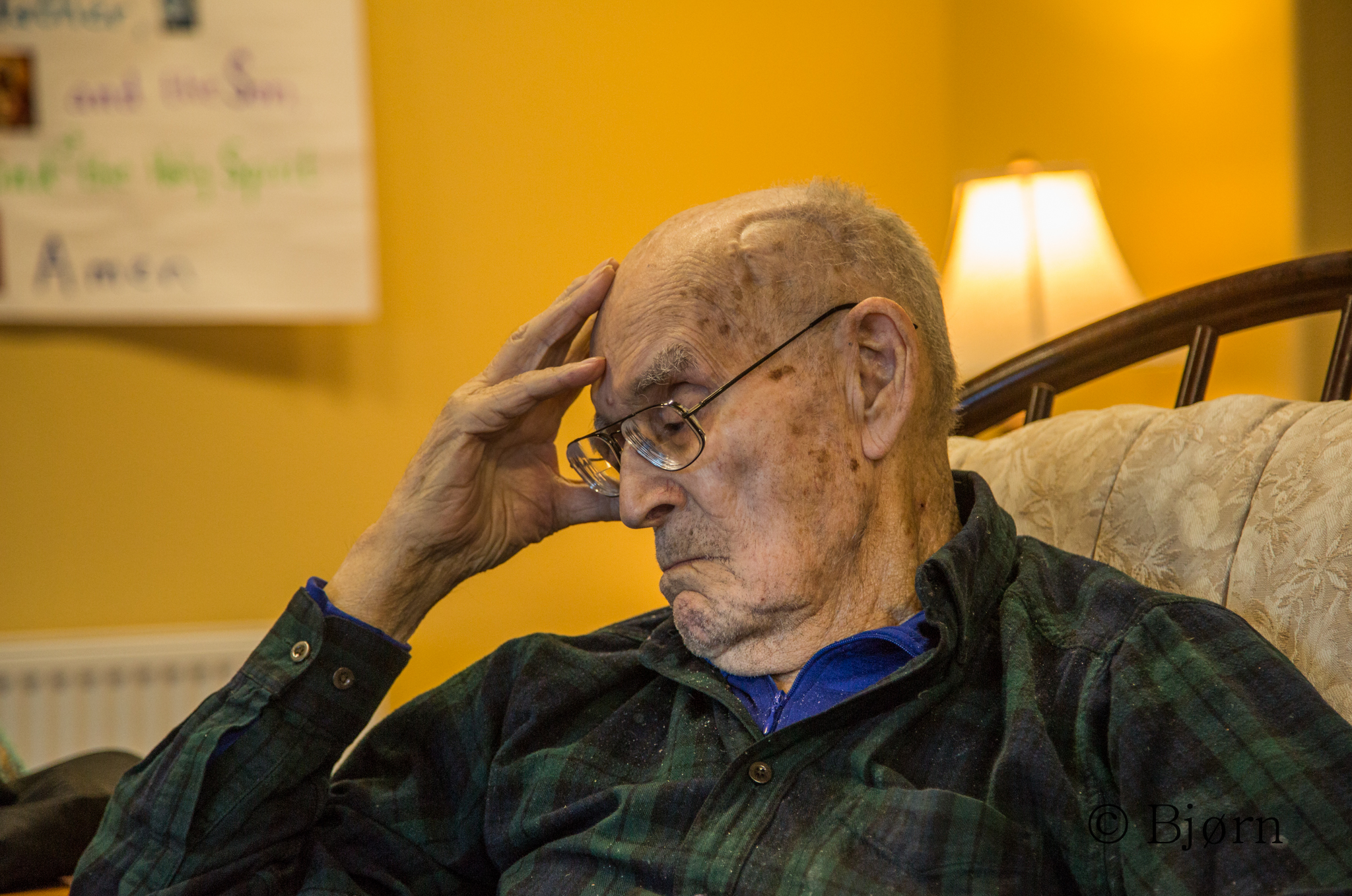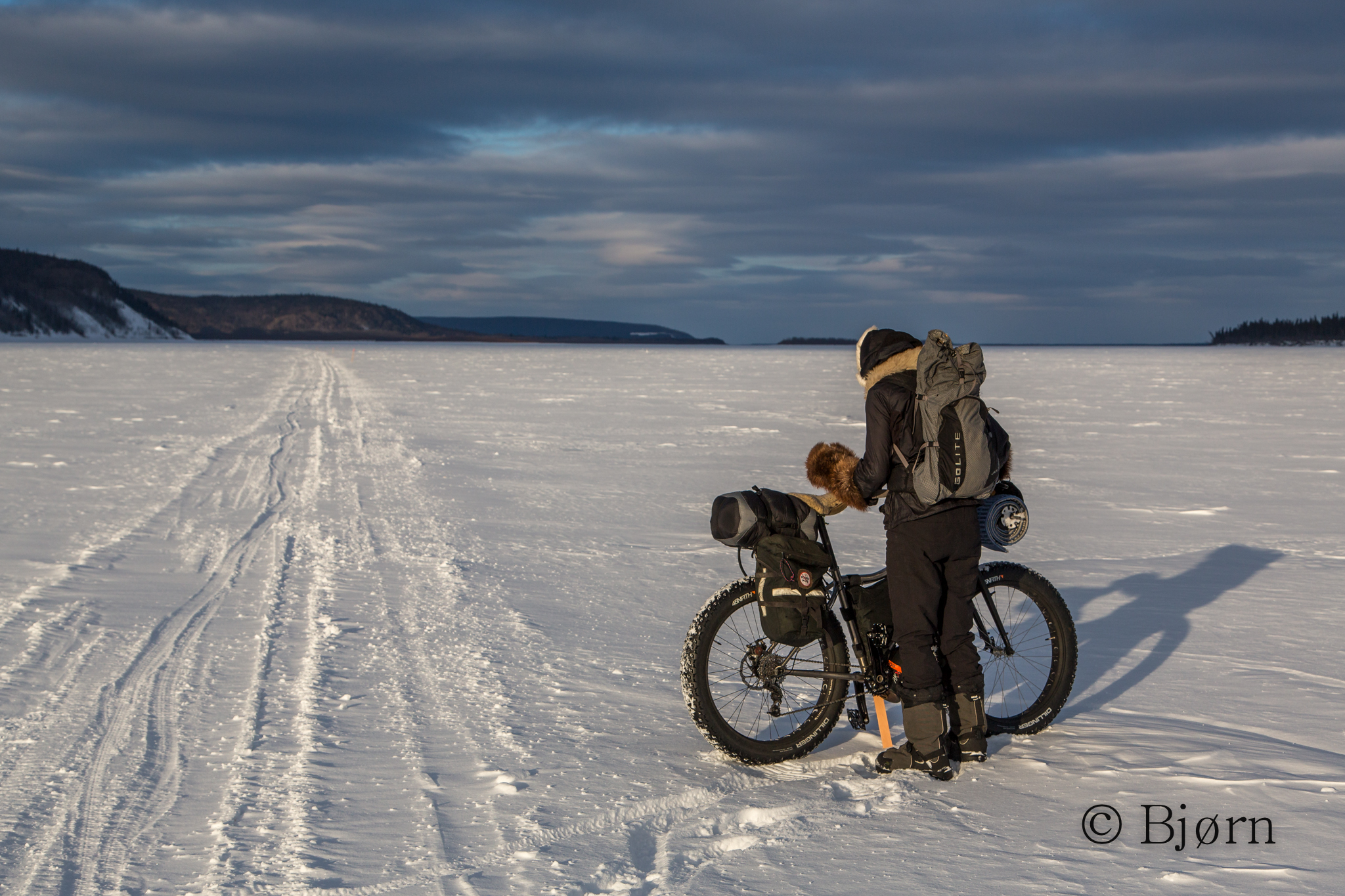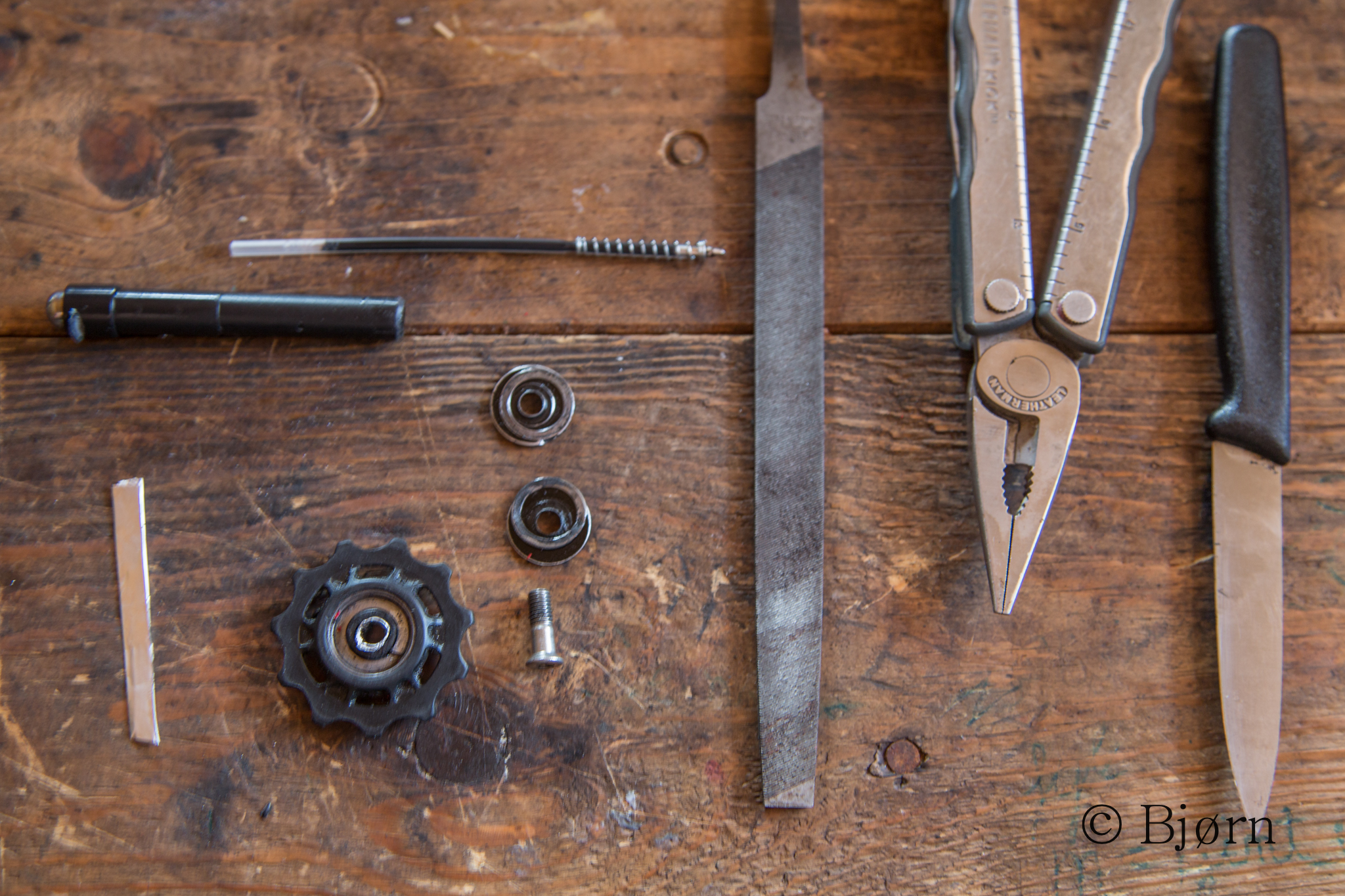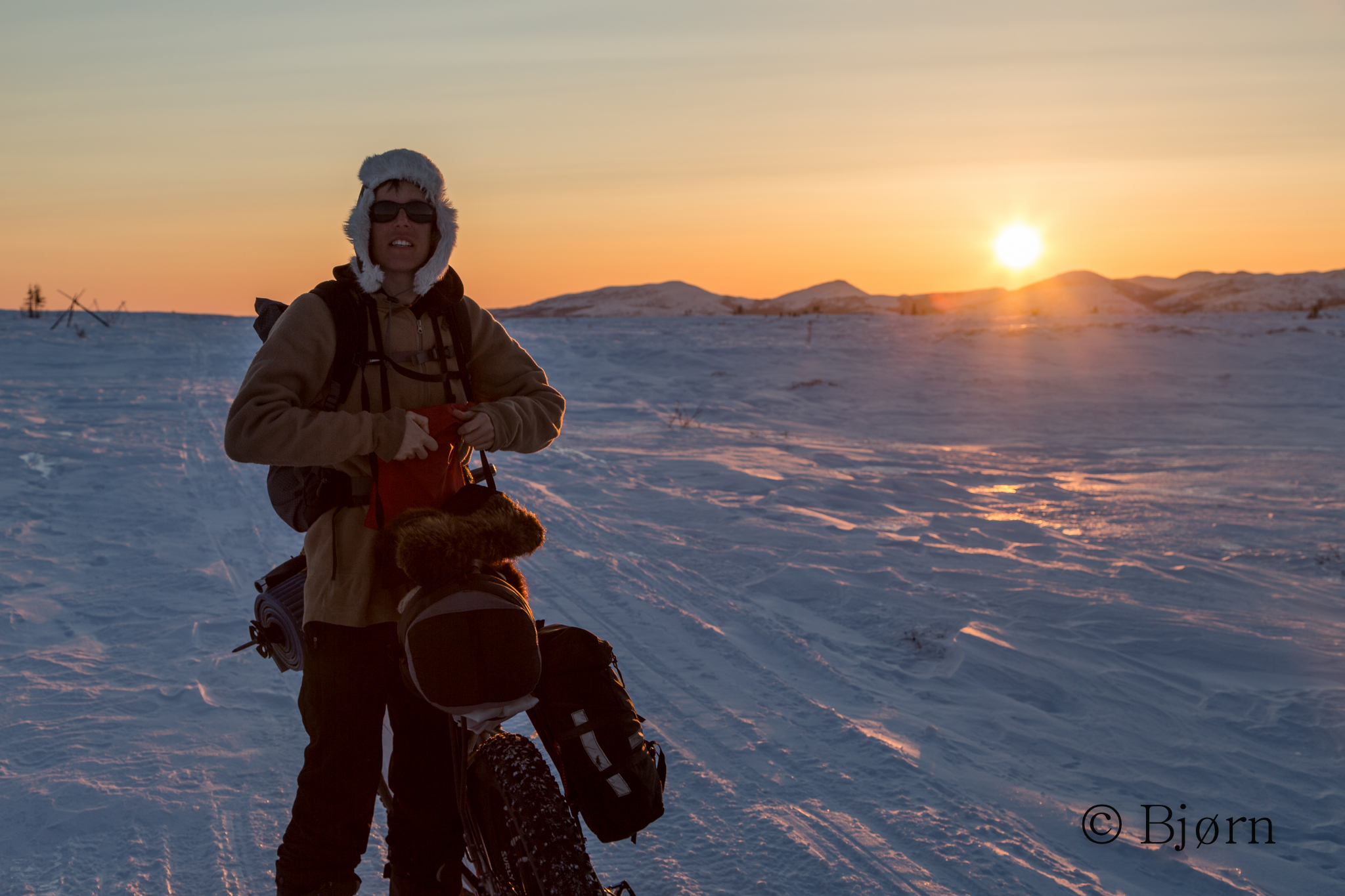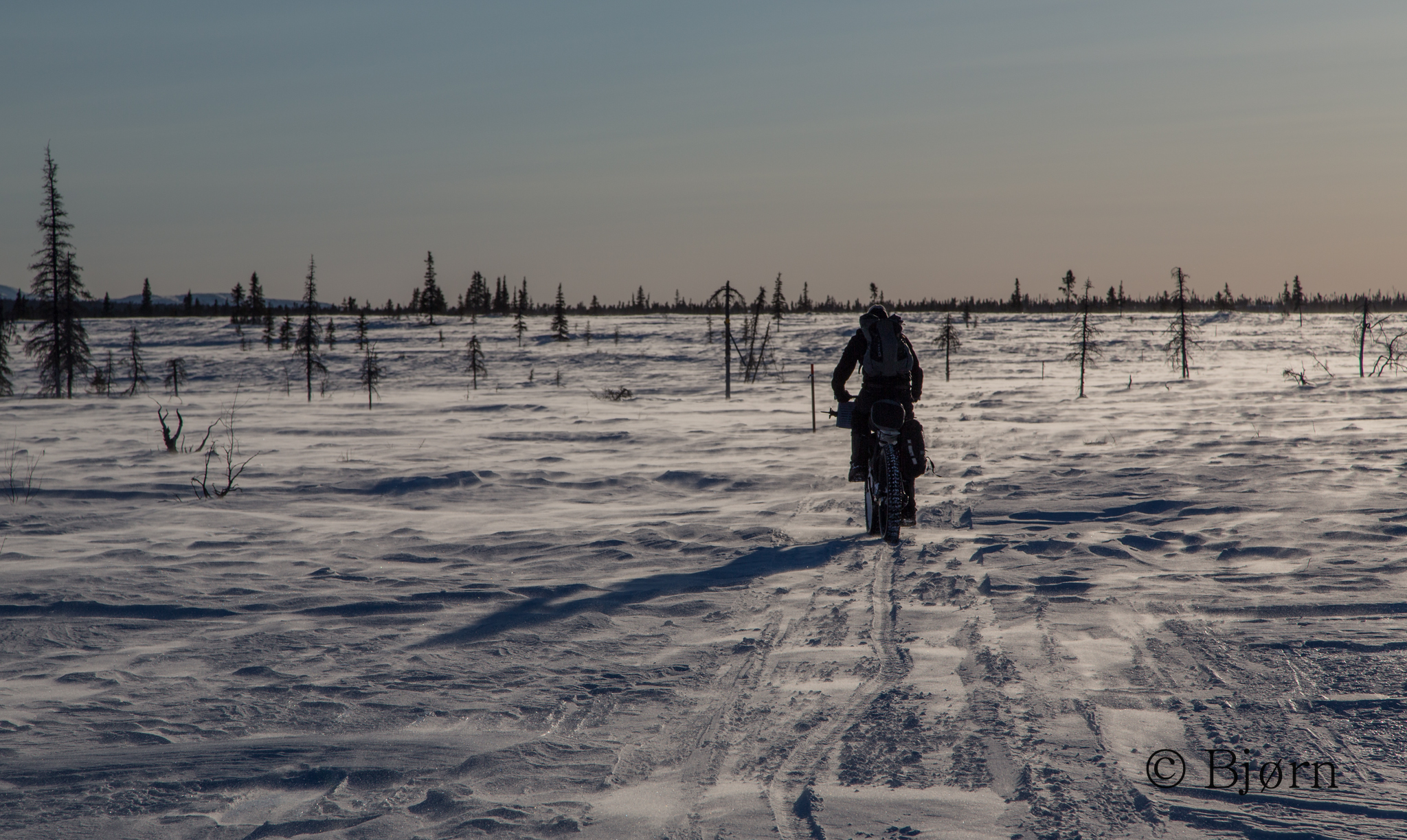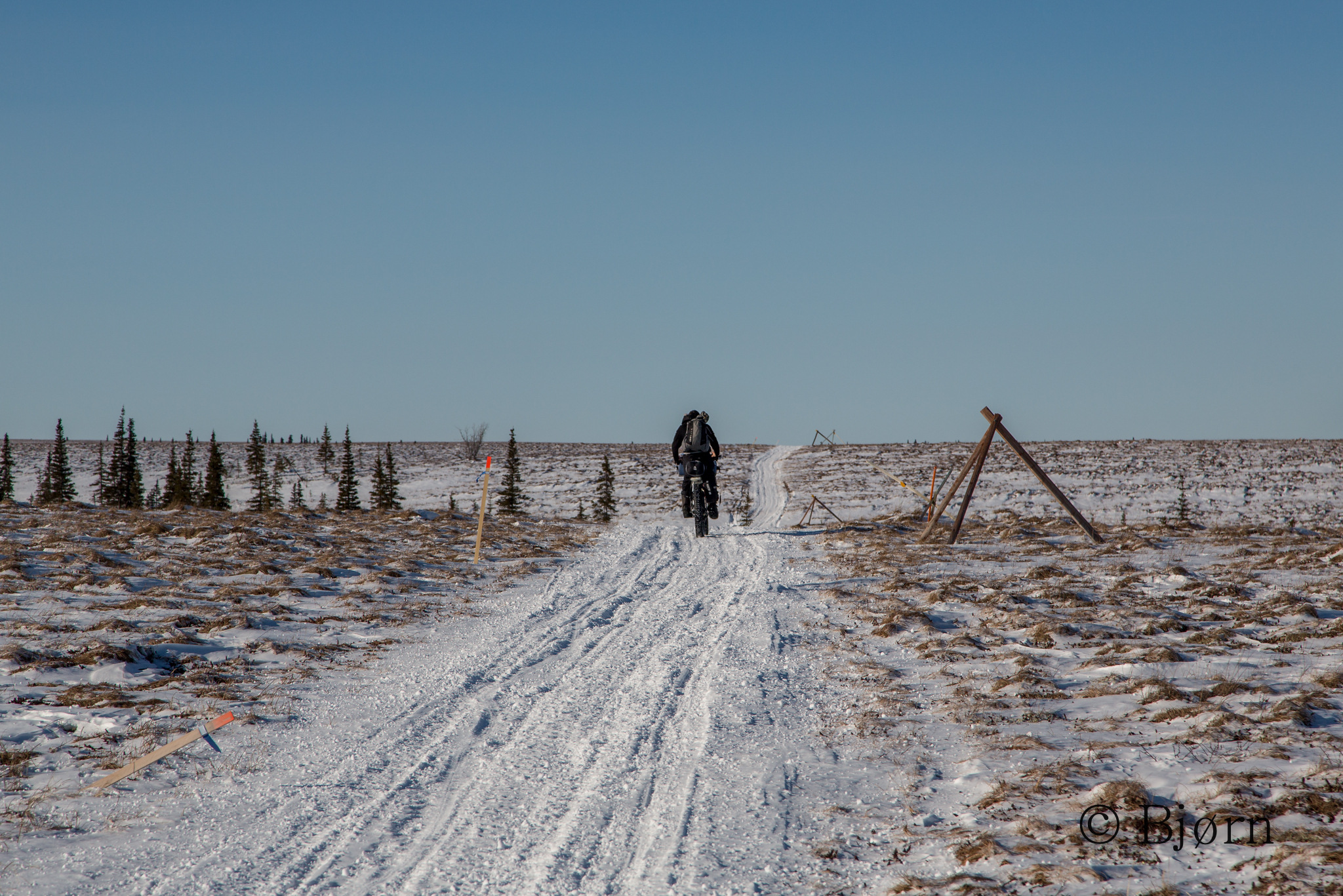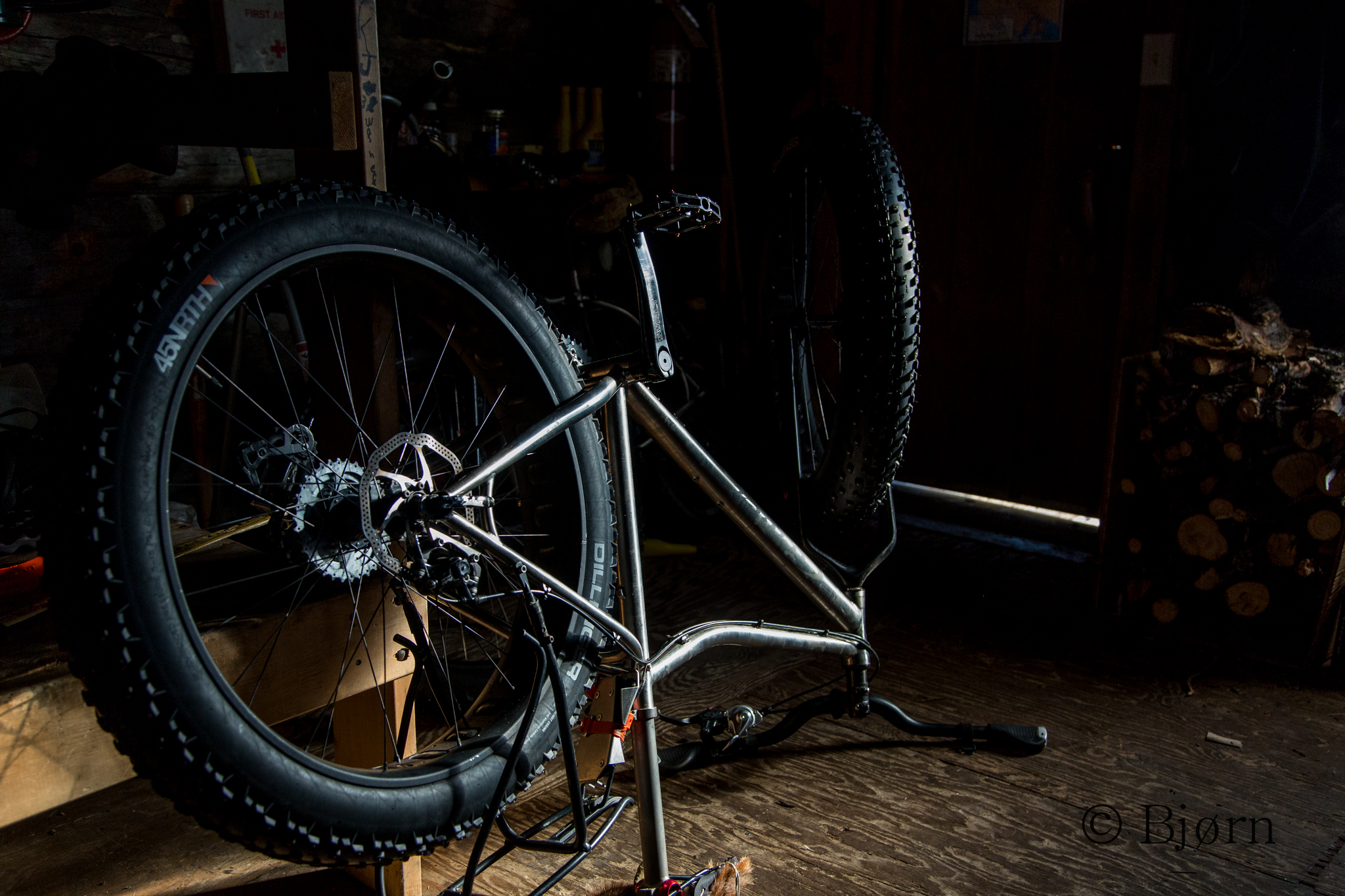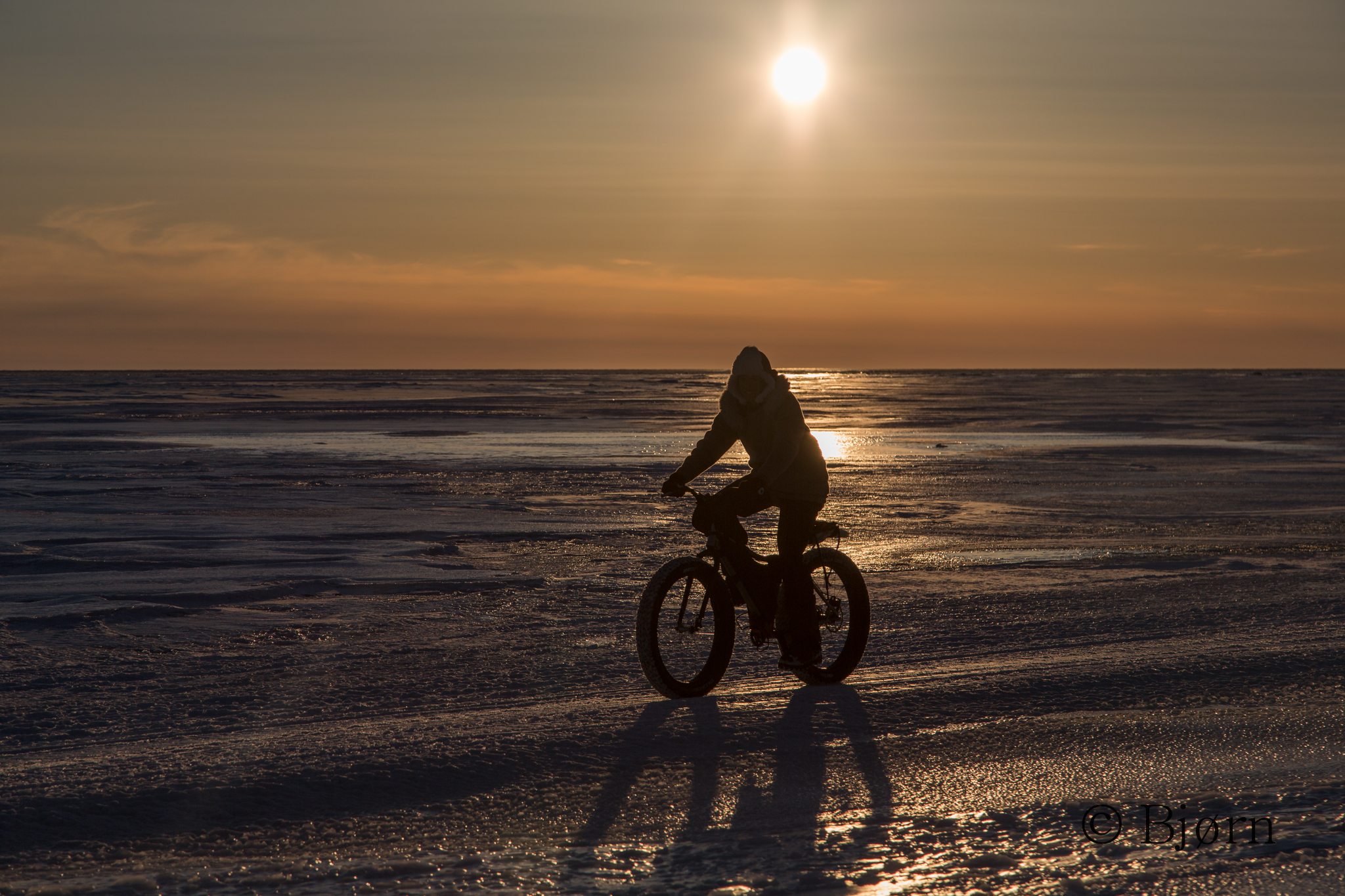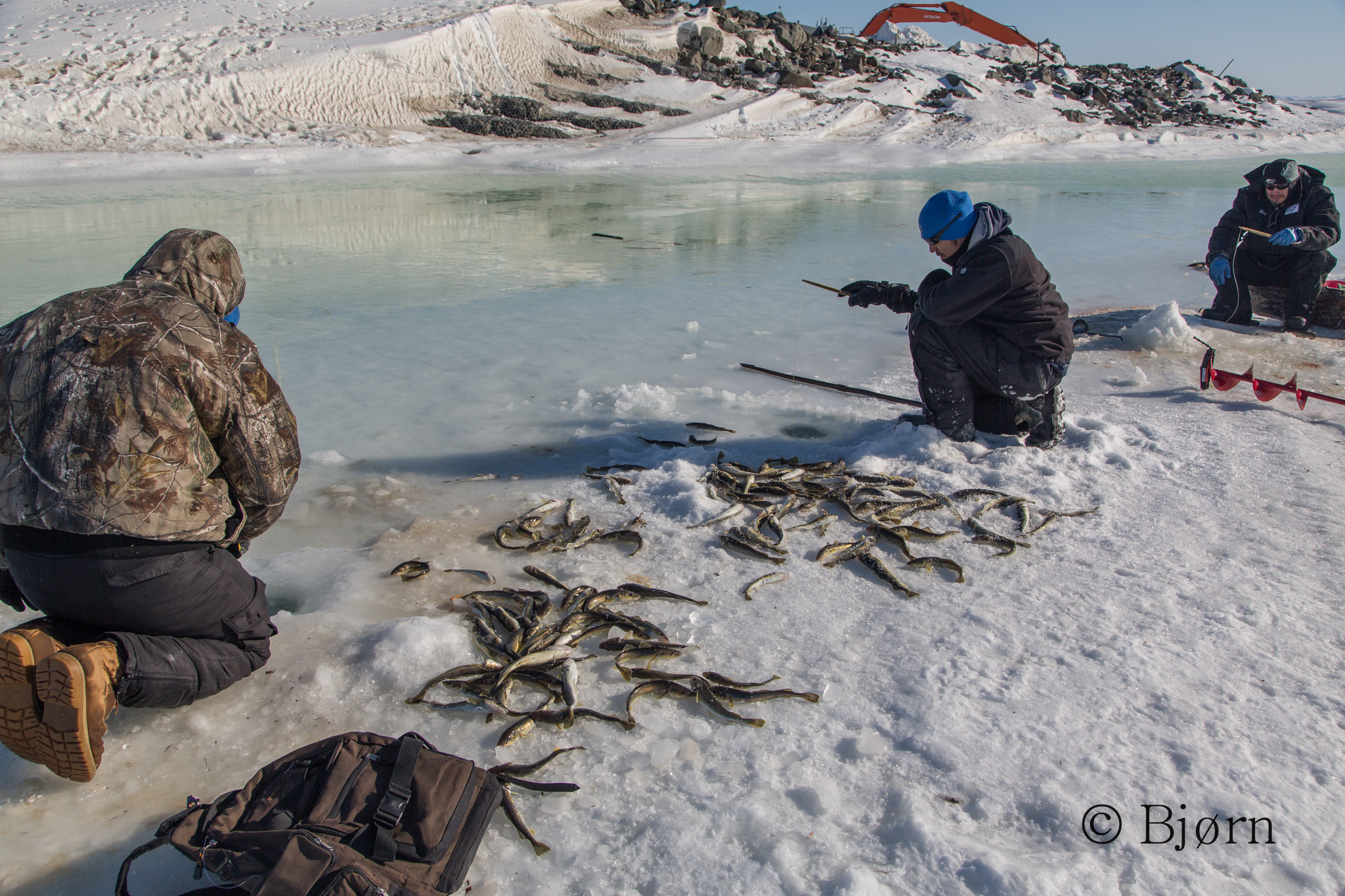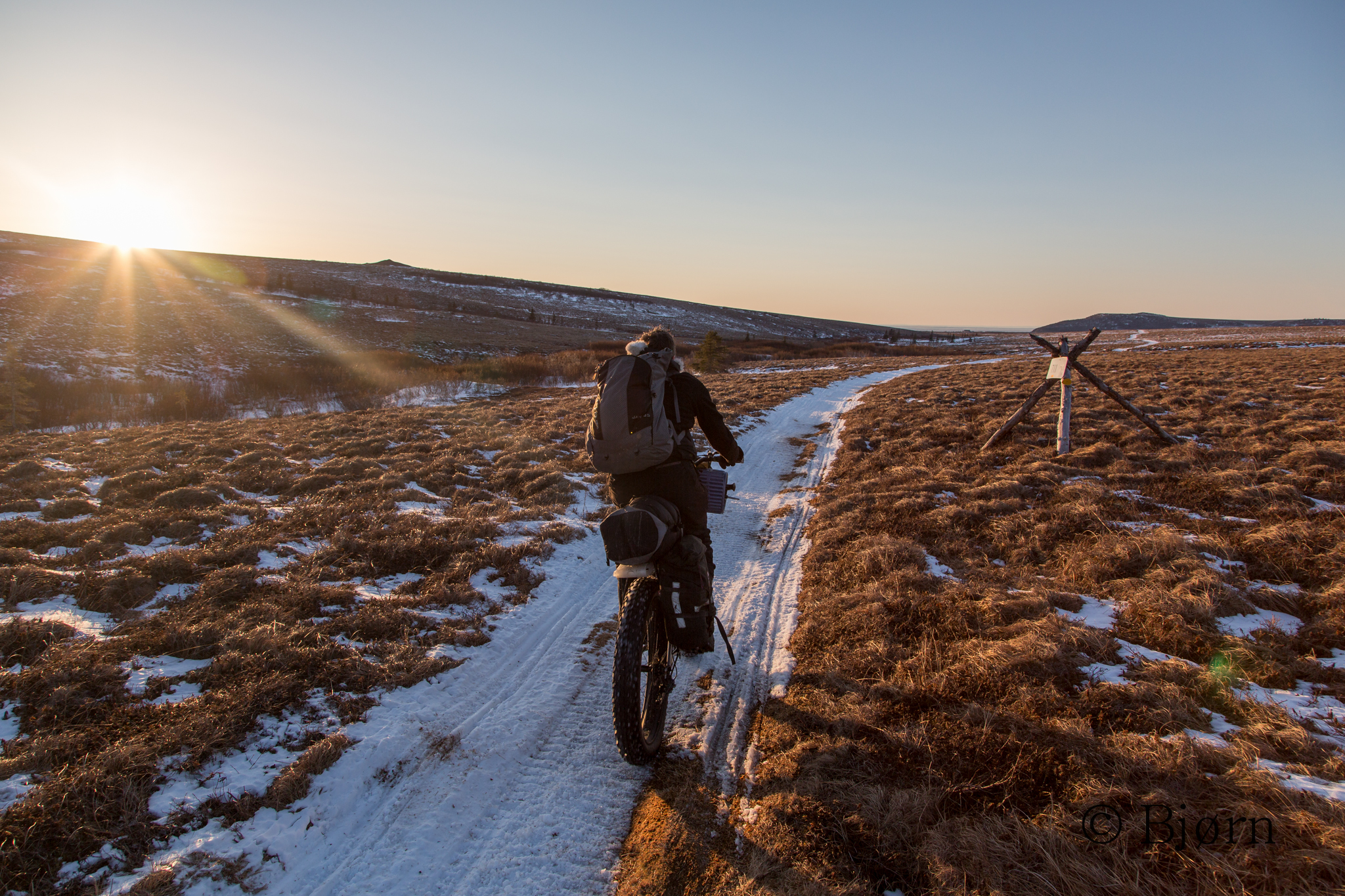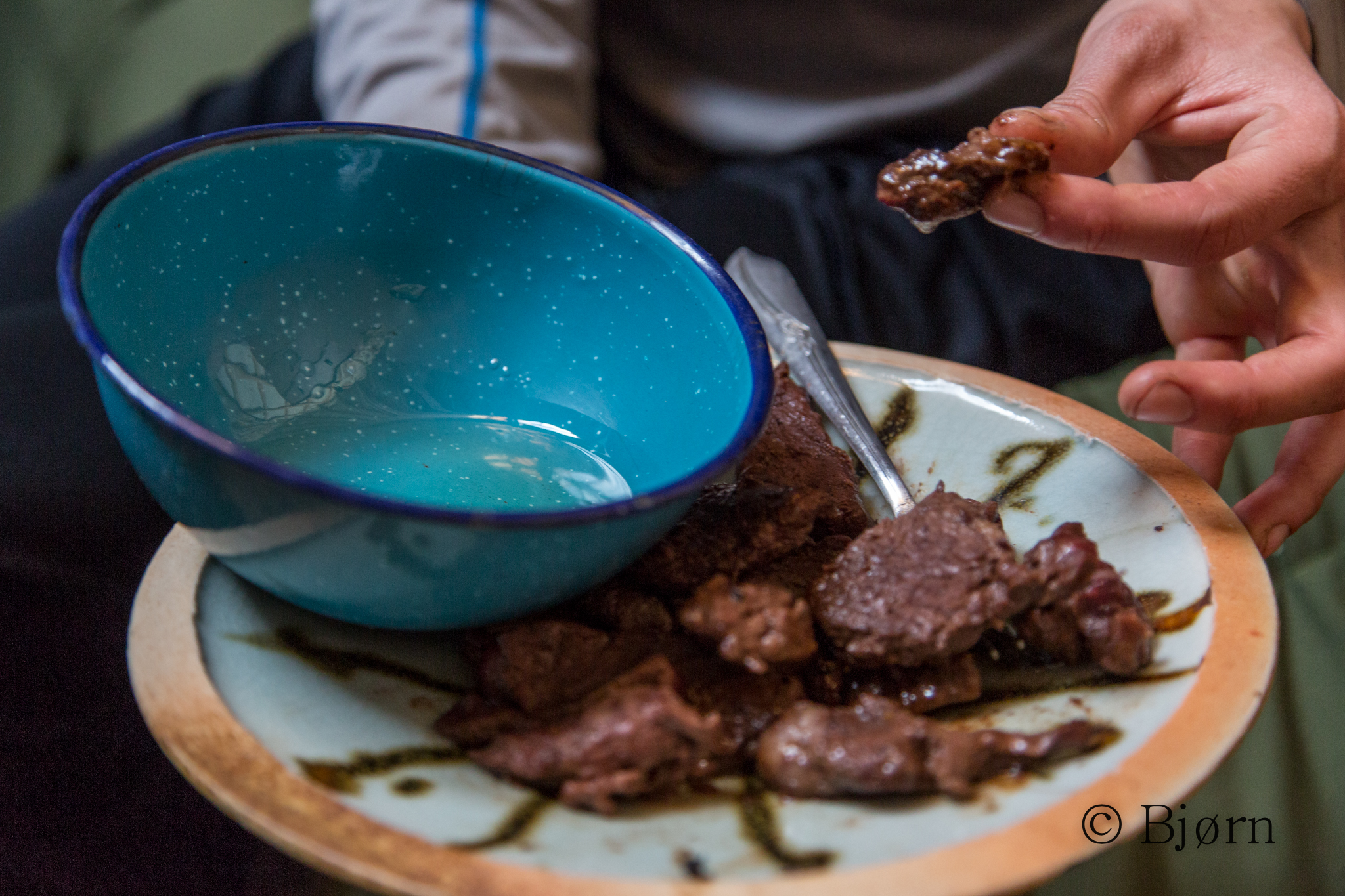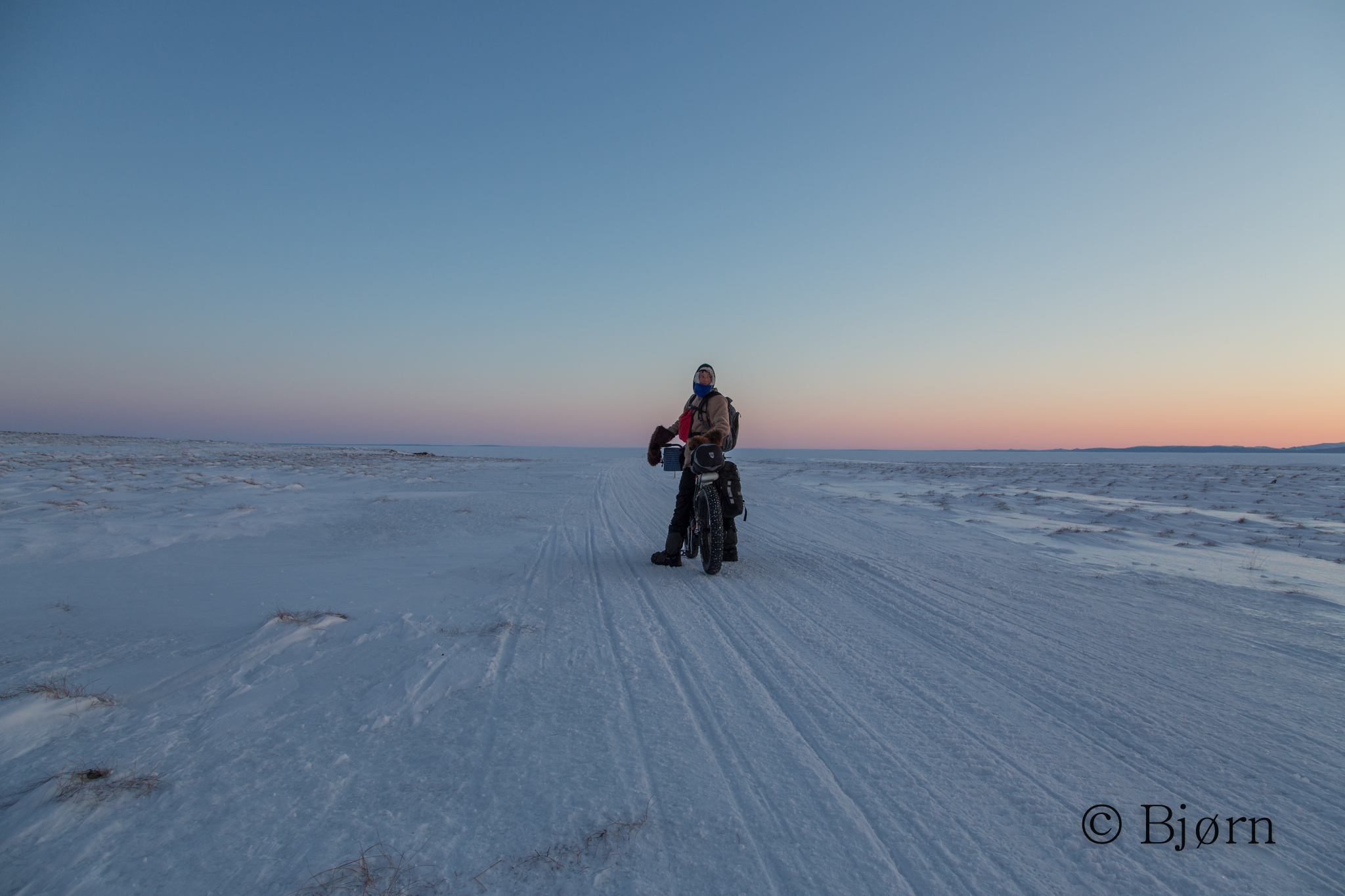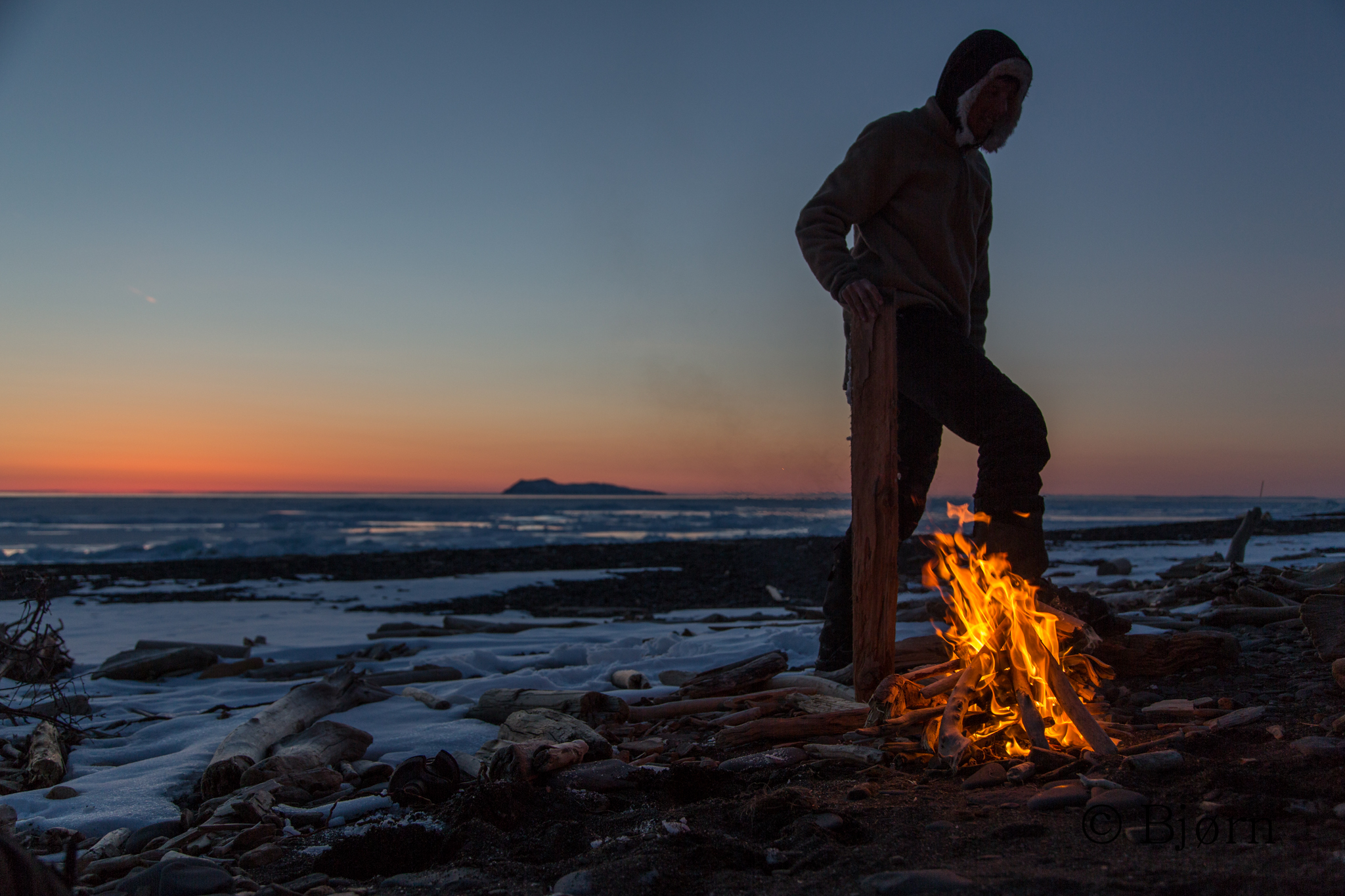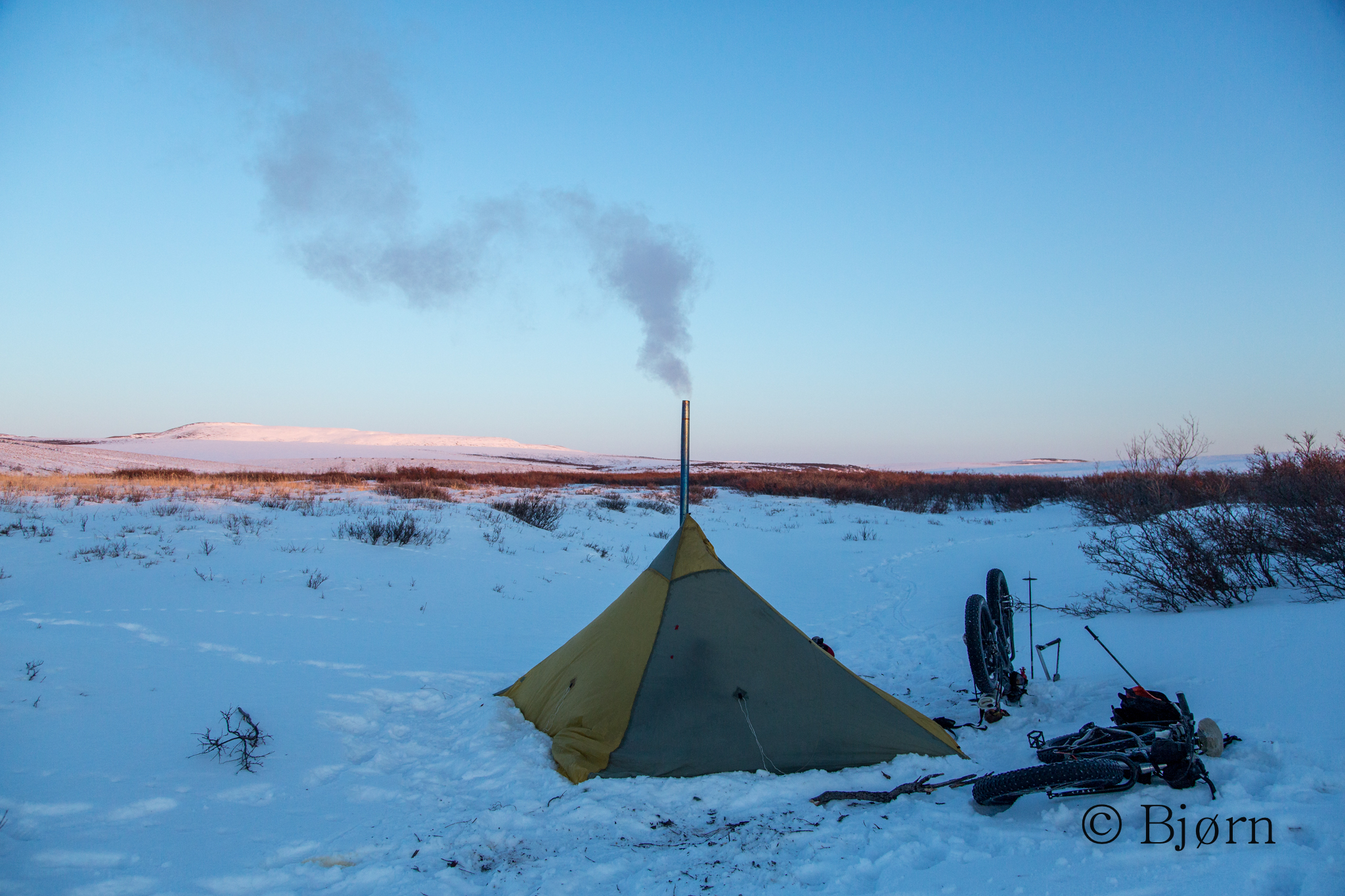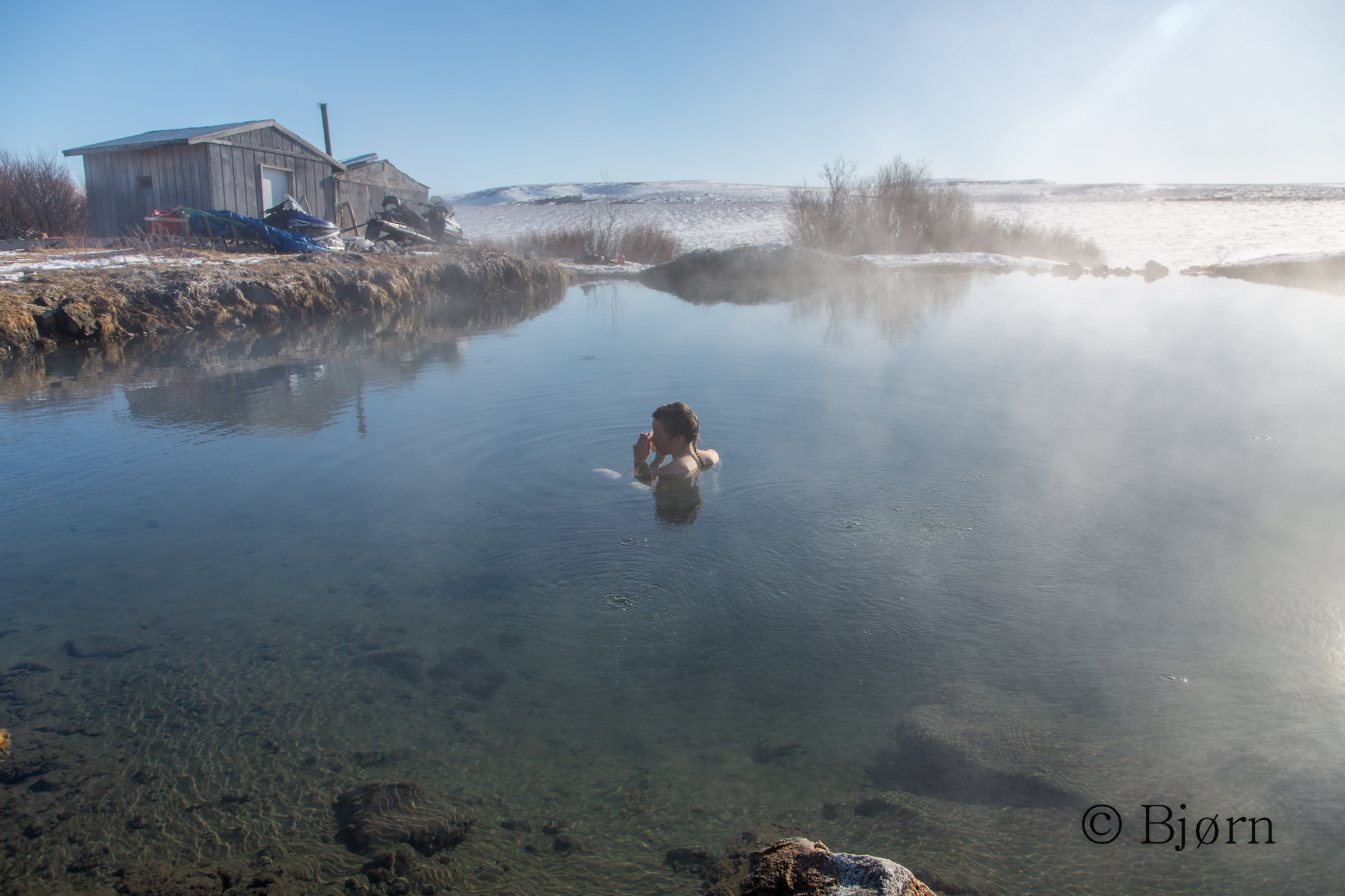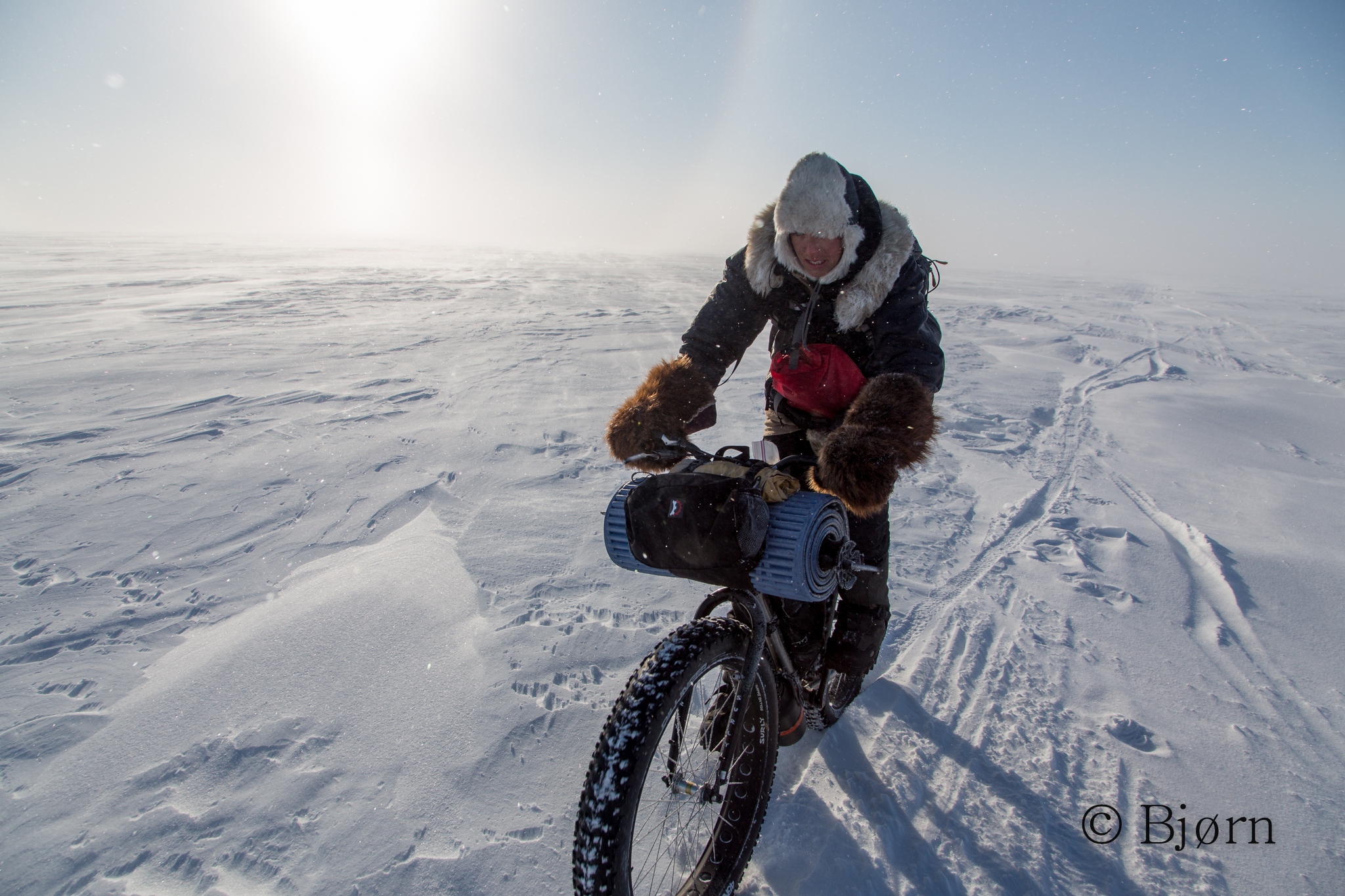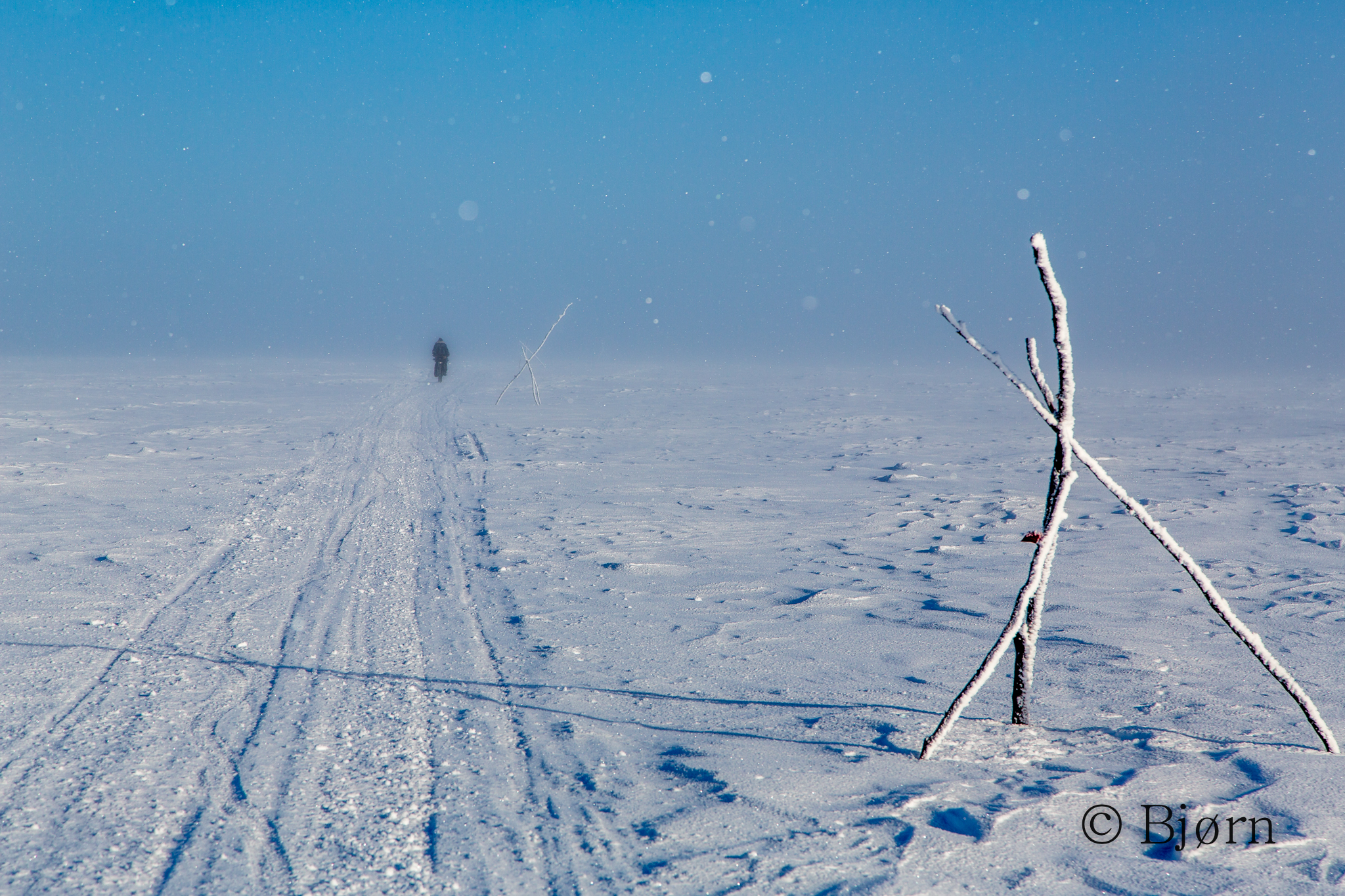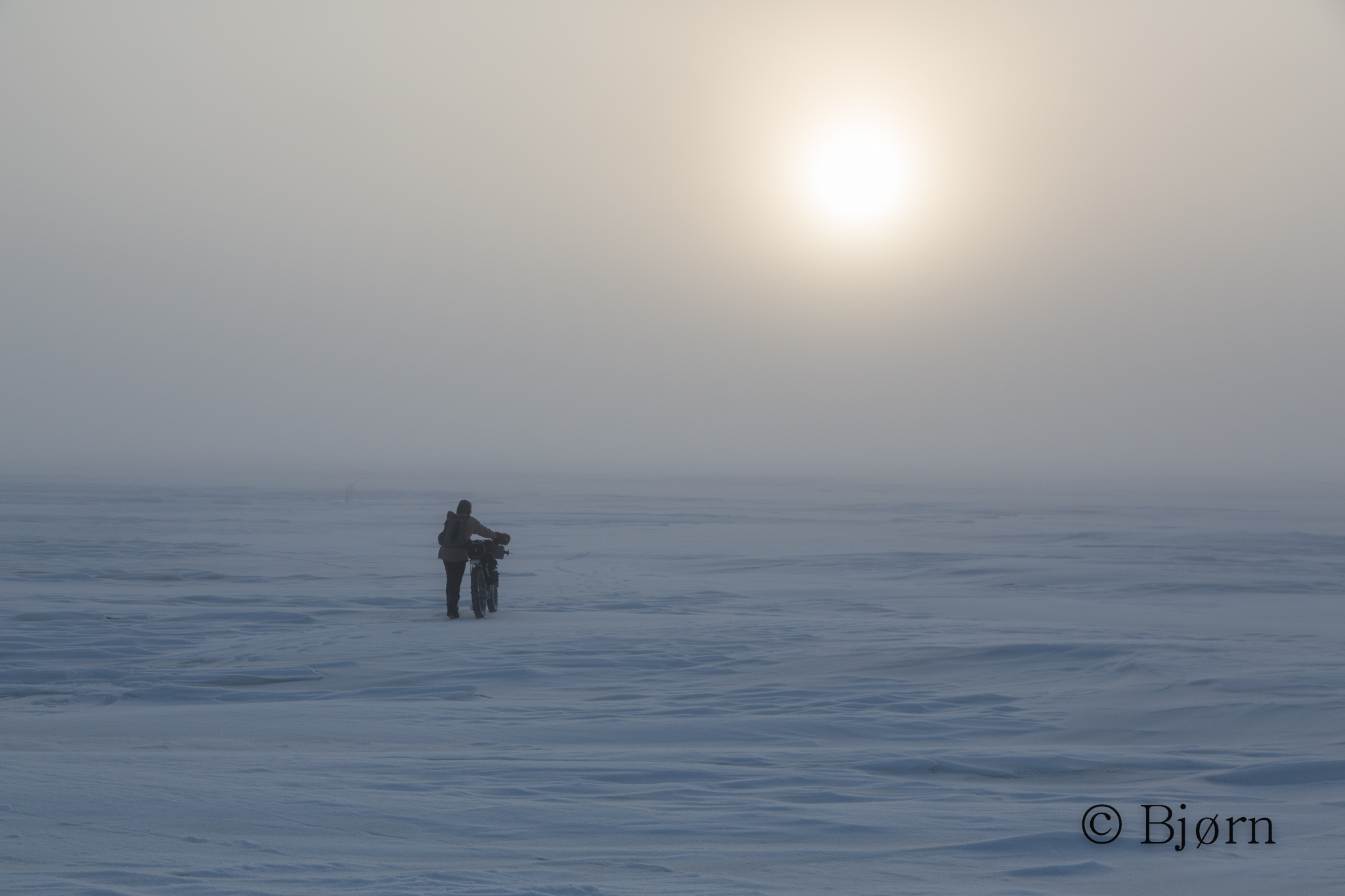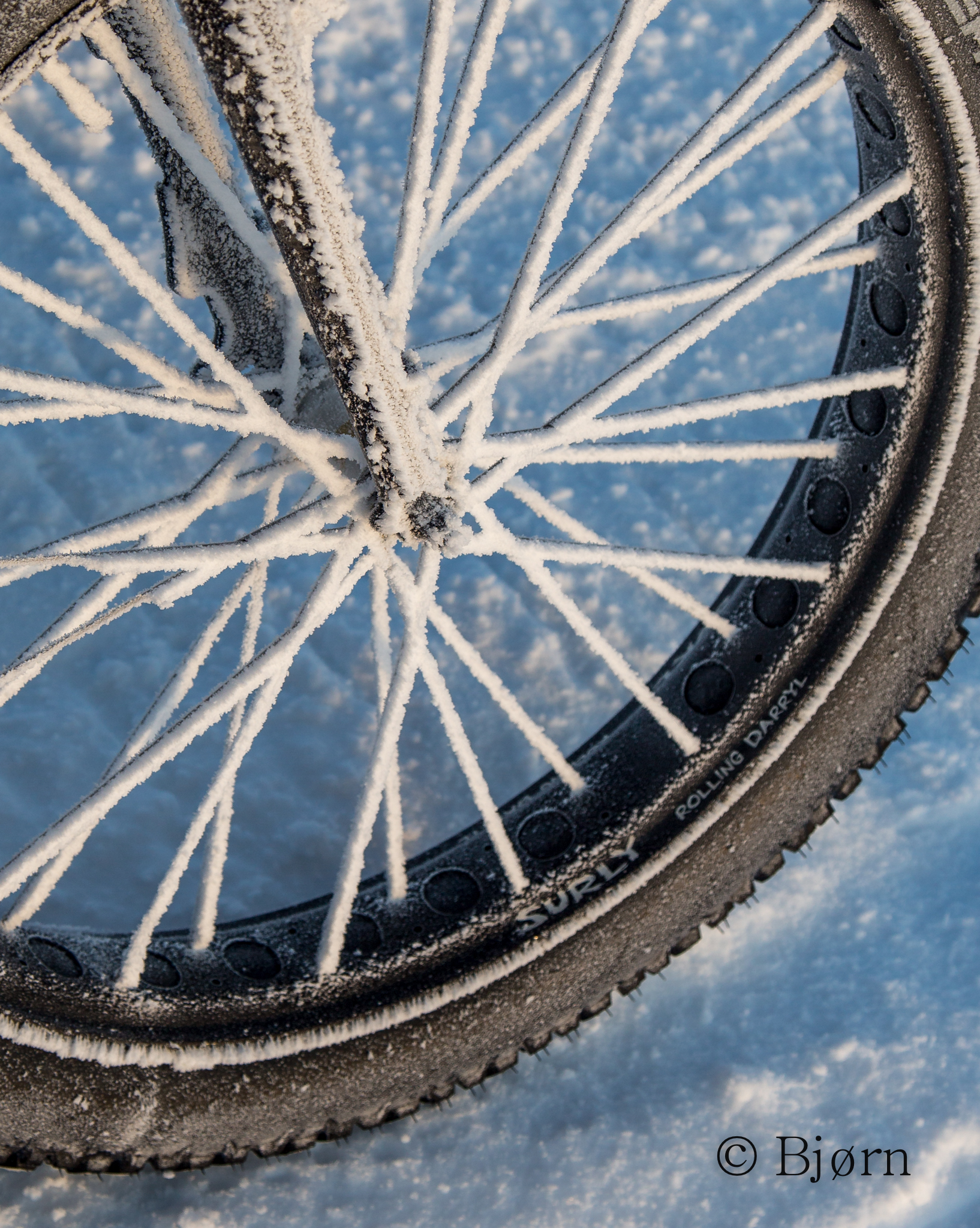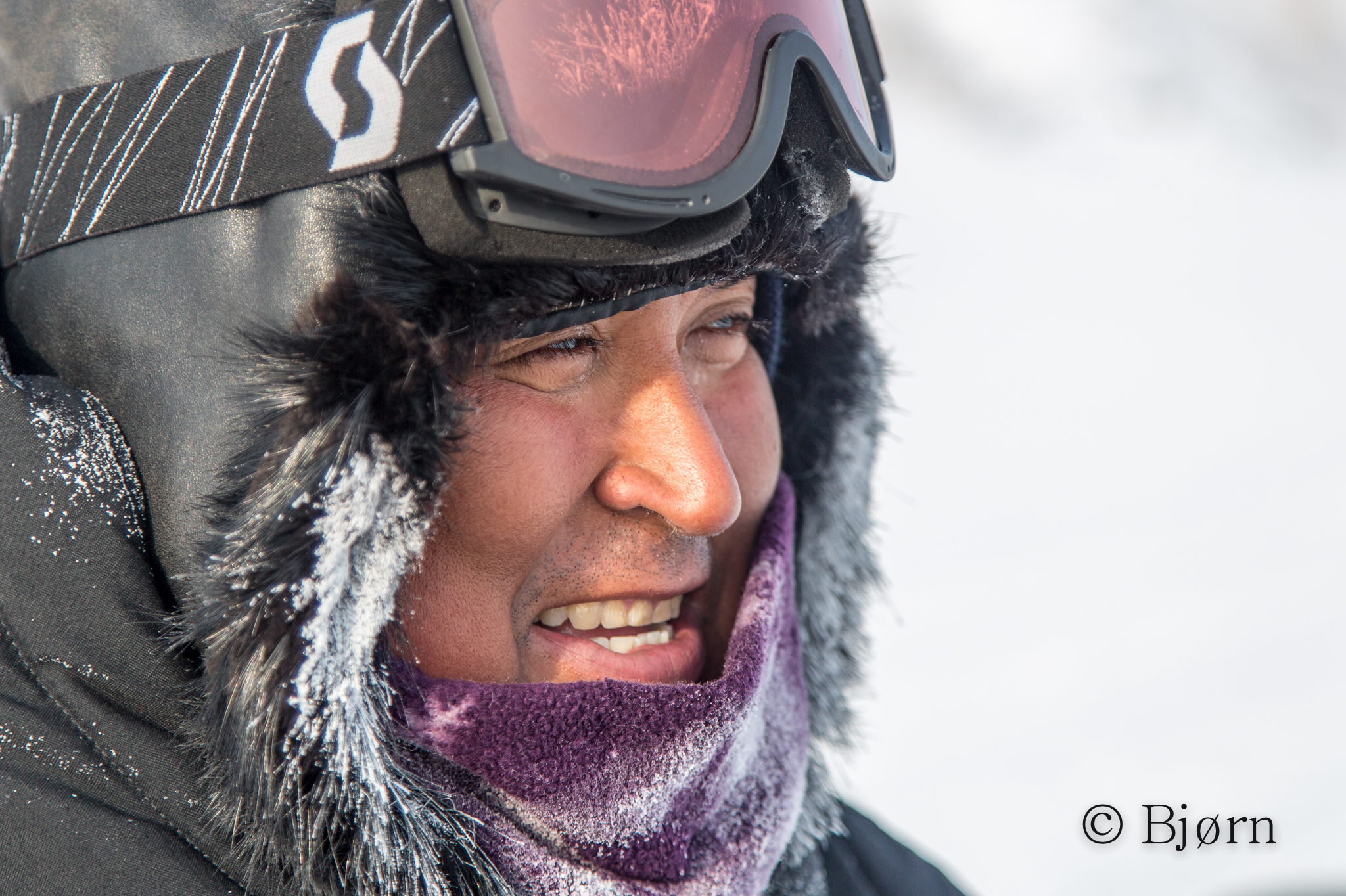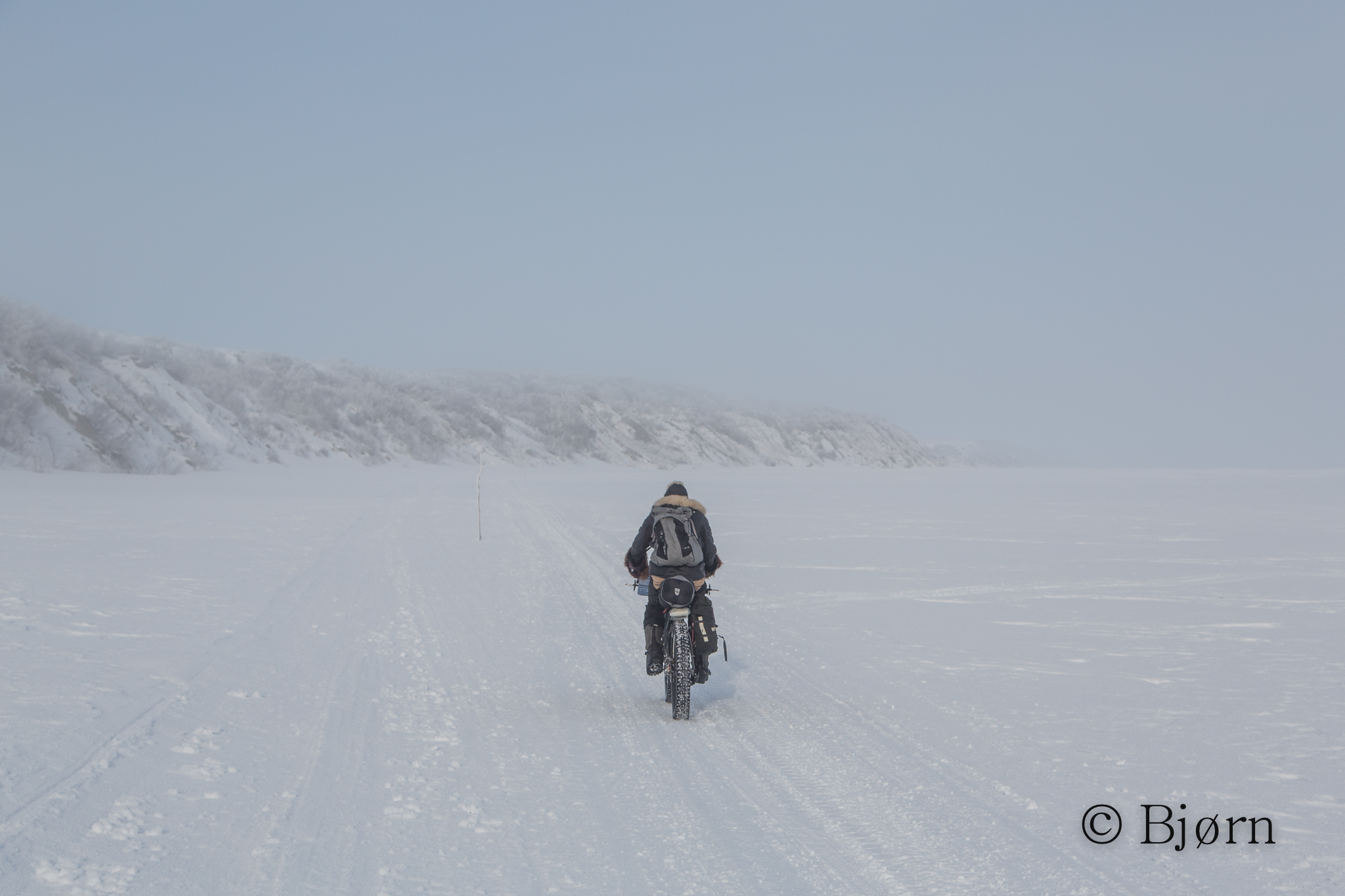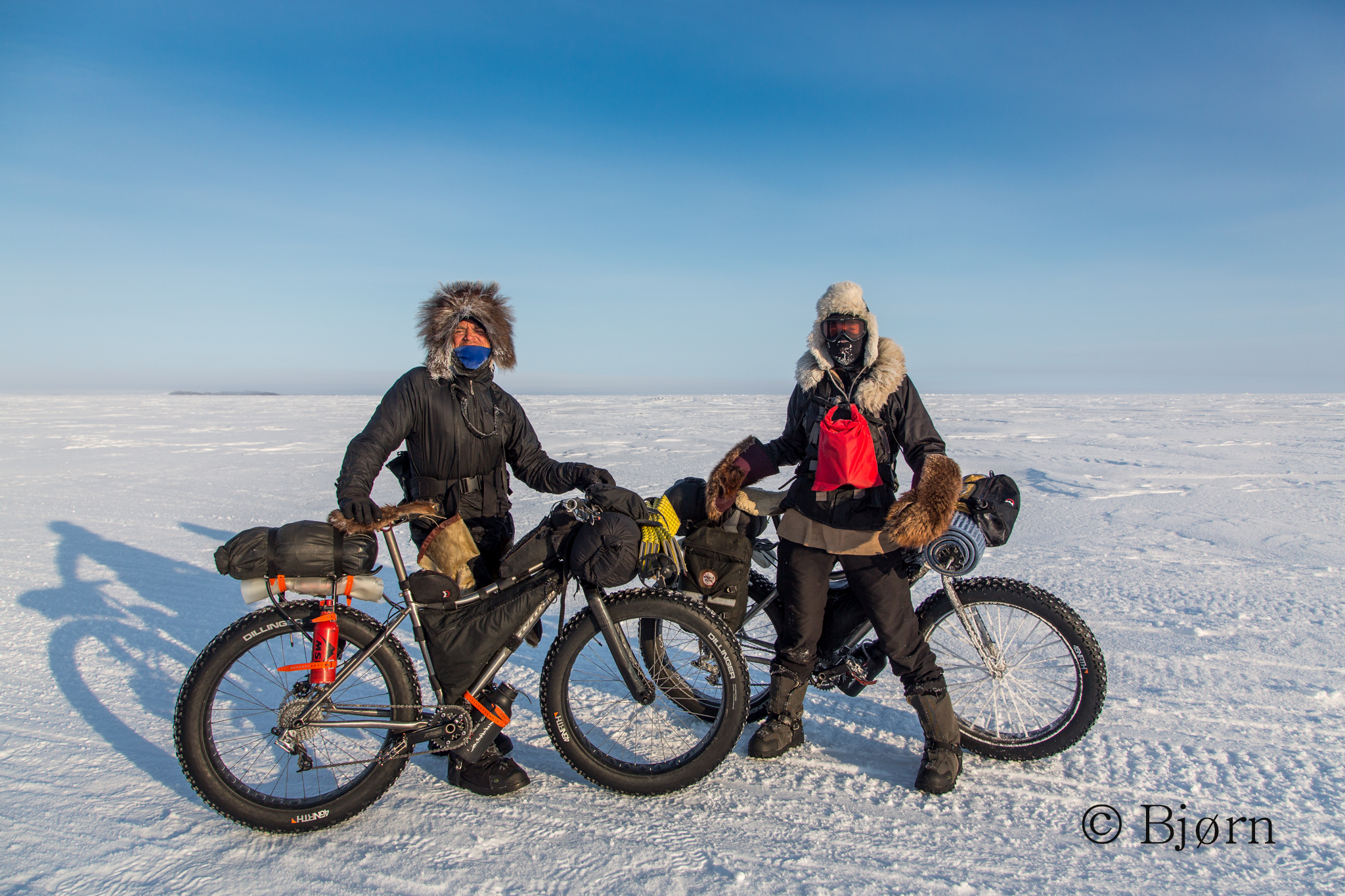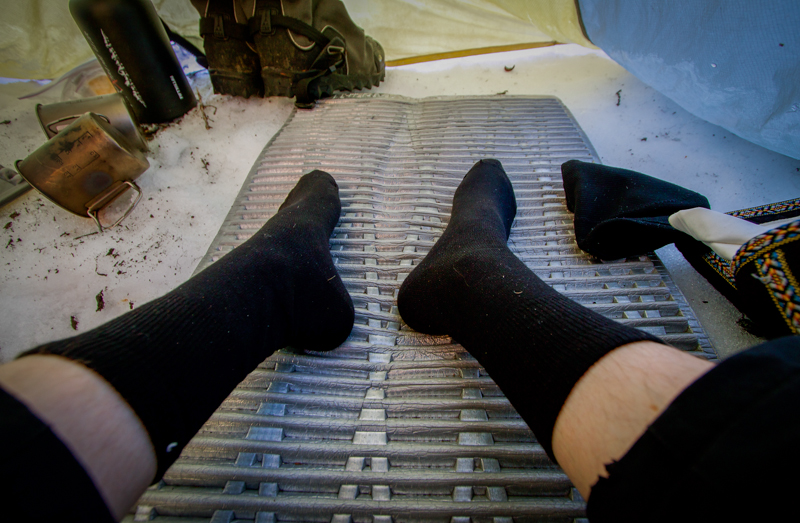“Buckland to Kotzebue is well traveled and should be a really good trail for you guys.” This is a statement we heard since Koyuk. As we drew nearer to Buckland the same sentiment was repeated and our confidence grew.
In Buckland, we met an older man who grew up in Candle and began driving dogs at an early age. Beyond giving us trail advice, he filled us with stories of his youth, growing up in the region and running dogs. Buckland has the honor of being the Alaskan community with the most dog teams (I believe per capita) than anywhere else.
The pertinent trail description was very clear and came from the lips of a well-traveled veteran. “Follow the Buckland River to the bay, cross the bay, follow the shore of the Baldwin Peninsula until you come to a shelter cabin where the trail will cross the peninsula. From there just follow the trail to Kotzebue.” His advice sounded straight forward and within our means. “And yes, it should be well marked and well traveled.” he said.
The river was windswept, free of snow and therefore very fast. When we reached the bay there was a fork in the trail; one went east across the ice and the other west, which seemed to follow the shore – perhaps to Candle or Deering. We headed east and crossed the bay, but rather than follow the shore, the trail went on land and headed east. Moose, herds of caribou and fox filled this beautiful valley but after a few miles of due east travel we stopped. “This seems wrong.” Kim said, and I agreed. For the first time on the trip, we backtracked and returned to the intersection.
Back at the fork, we headed west for a few miles but this too didn’t seem to fit the description – at all. The trail seemed to stay on the north side of the Seward Peninsula and we needed to cross the sea ice to the other side. Totally confounded, we returned, once again, to the intersection and hoped someone would be out, that could set us straight.
After an evening of meditation we convinced ourselves that the first trail seemed to make the most sense and once again we headed east. Past our previous turn-around we saw a herd of caribou in the many hundreds. We tried to be stealthy on our approach but they saw us and ran. When they did, it sounded like a roar of thunder and the light snow was kicked up into a cloud in their wake. Amazing.
Eventually we came to a shelter cabin. The morning was chilly so we went in, lit a fire and hoped to find clues to settle our uncertainty. We found none. Our insecurity became oppressive but we decided to continue on. “Well no one has ever biked to Selawik either.” I joked.
Outside, the distant sound of an approaching snowmachine was welcome. We went out and waited for it. “Nope, this trail goes to Selawik.” The driver said. “You need to go back to the fork and follow it.” “Most Bucklanders have been using another trail that you will eventually intersect while crossing the bay.” Our sage wisdom had come from someone who had not been out this year and because of rough shore ice people had opted for a new route across the bay.
The next day we were on the east shore of the Baldwin Peninsula - heading north to our final destination. We were both excited to be within hours of completion. No one has ever done what we were doing and getting to Kotzebue, under our own steam, has been an ethereal goal for so long but I couldn’t help feeling a little sad too. This has become life; wake up and ride - stop and camp – repeat. The further north we go the better it gets, just like I imagined it would. I was tired but I wasn’t ready to stop.
In the early part of the day, two hunters stopped to inspect our bikes and inquire with the usual line of questions: “Where did you come from?” being the most common. Through the goggles, parka, hood and hat I thought I recognized one of the hunters; “Are you Seth Kantner?” I asked one of them. “Yes” he said.
Winters in Alaska are long and dark. As a result, I developed a love for reading at a young age. There are too many “favorite” authors of mine to list but when the categorization is whittled some, it becomes easier. Without question, if someone askes me what my favorite Alaskan books are, I respond, “‘Ordinary Wolves’ by Seth Kantner and ‘Shadows on the Koyukuk’ about Sidney Huntington.” We met the giants of Alaskan lore, while on the trail. Perfect.
Our next encounter was with a hunter returning to Buckland after delivering caribou meat to elders in Kotzebue. He wore the face of a man who lived life on the trail – sunburnt cheeks, well-worn clothing and a generous smile, that stretched to his ears. “Do you like muktuk?” he asked. “Yes we do.” He reached into his sled and opened an Alaska Commercial shopping bag and handed us a fat chunk of this precious energy food. At the next shelter cabin we ate nearly half of it and we didn’t need to snack for the rest of the day.
Because the Baldwin Peninsula is low elevation, the wind generators of Kotzebue were visible for hours. When we finally passed them and came to the end of the trail, at an intersection of road, we stopped to savor the moment and Kim began to cry. The little trail in Knik, where we had parked our car, 37 days earlier, had led us to the Arctic.
Beyond being a bike trip, this felt like something more. More than on any other trip I felt like we had tapped into something - something very hard to describe. It felt like we had tapped into the heart of Alaska, and it seemed strong and full of life.
Click here for slideshow.


